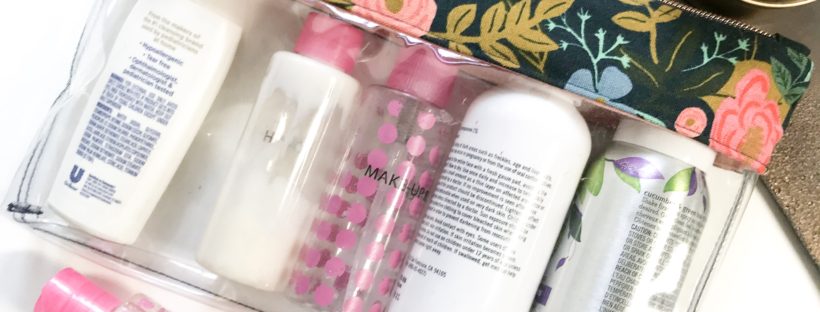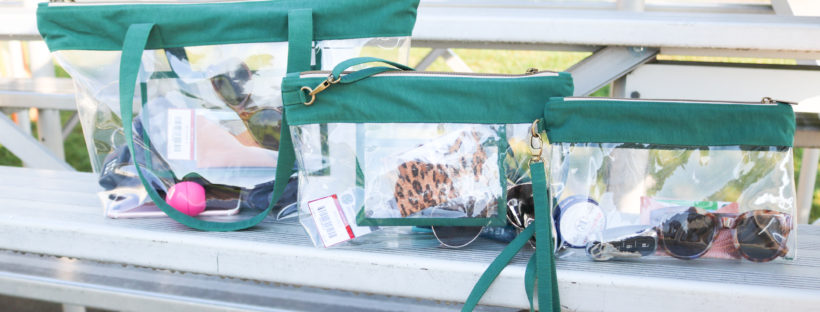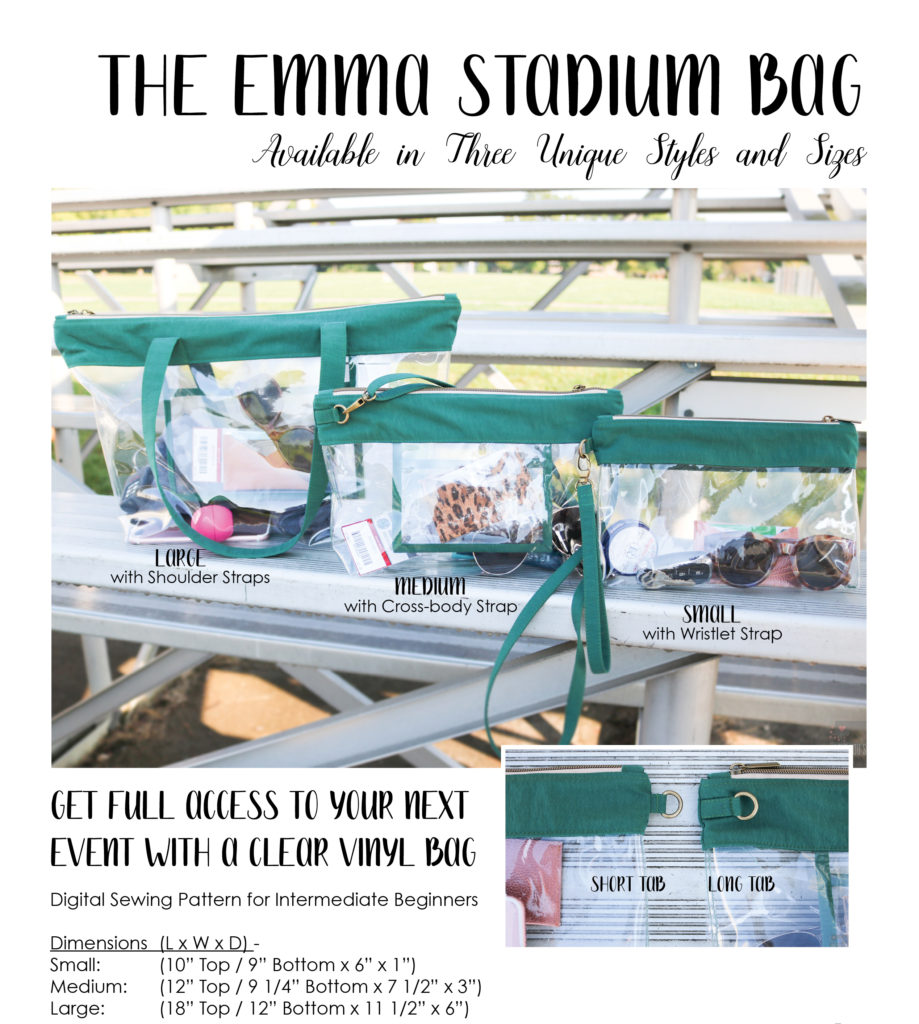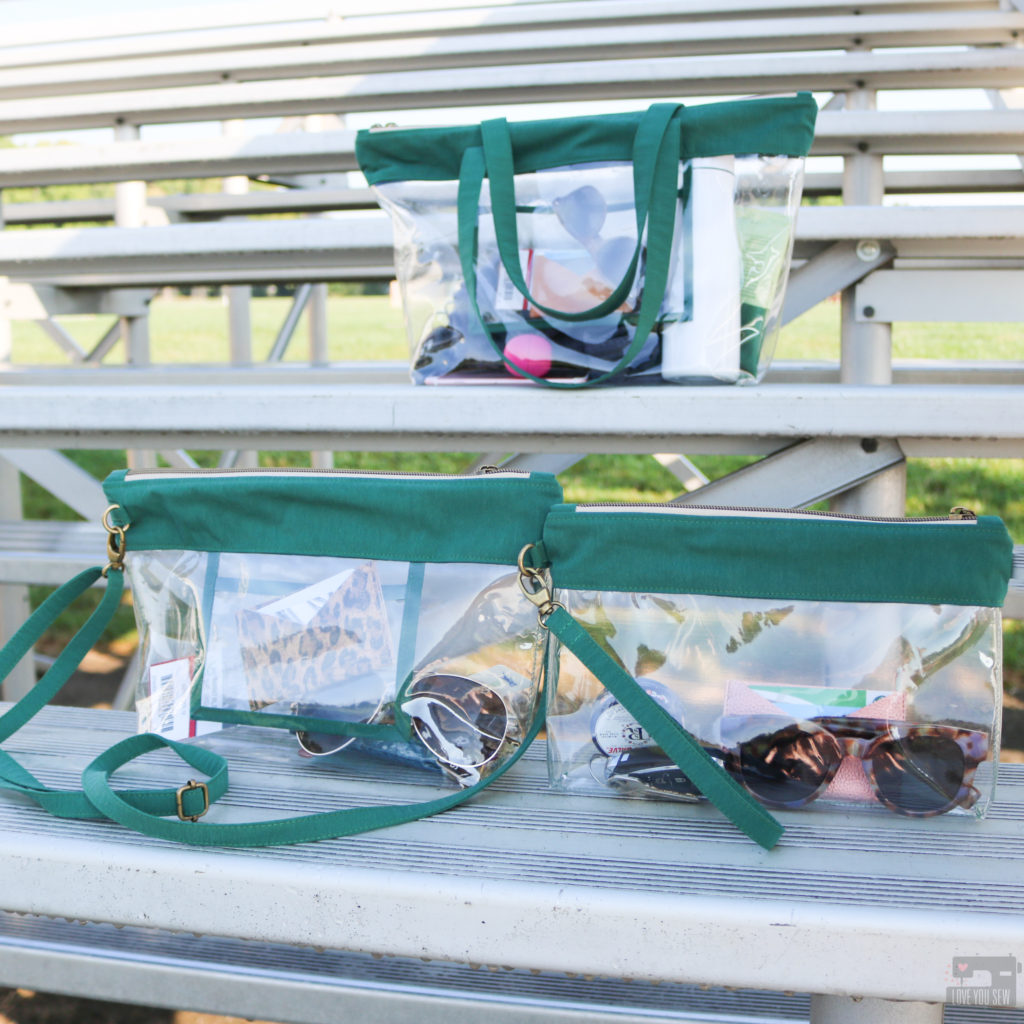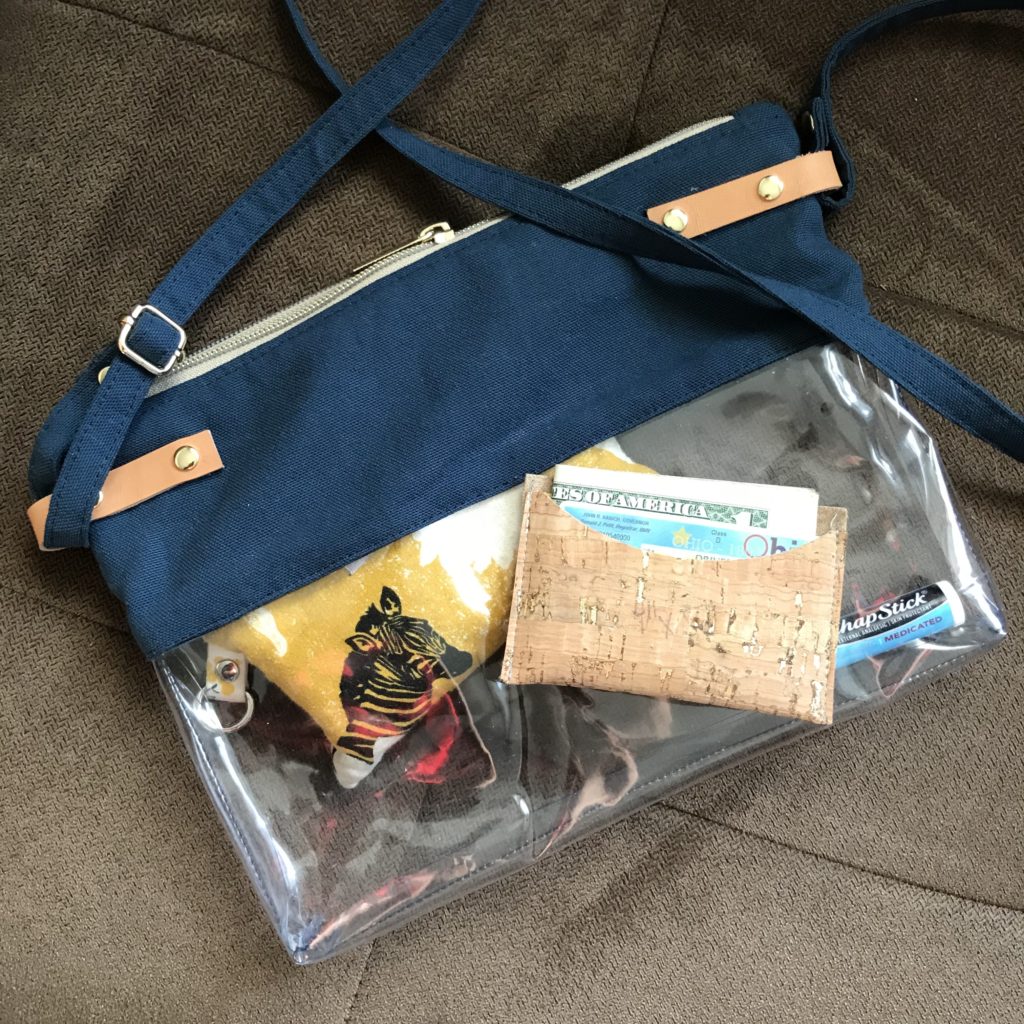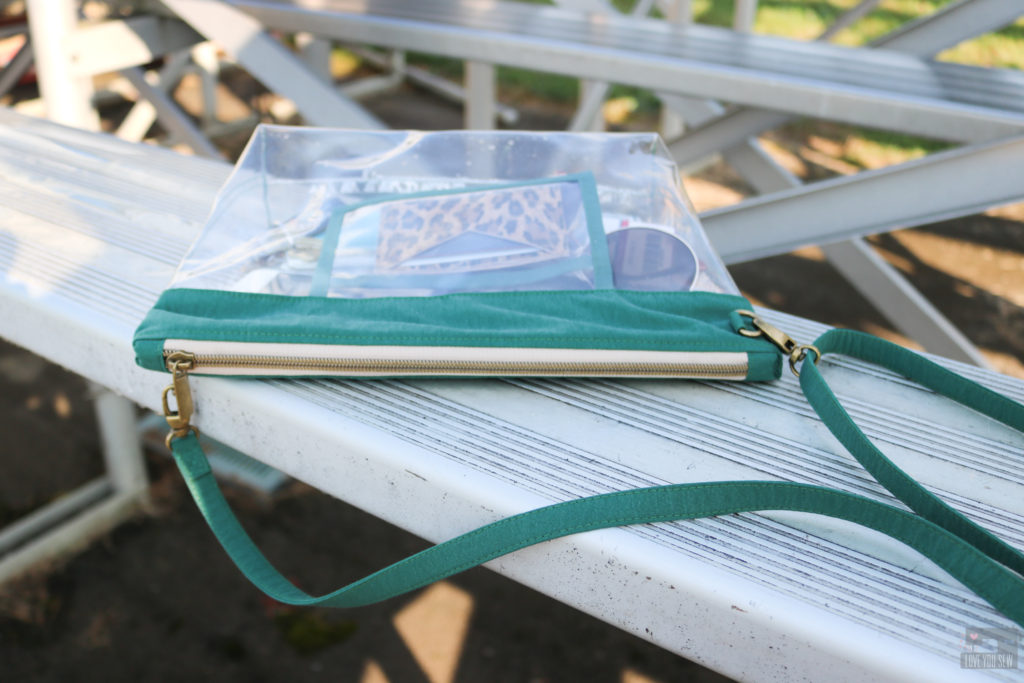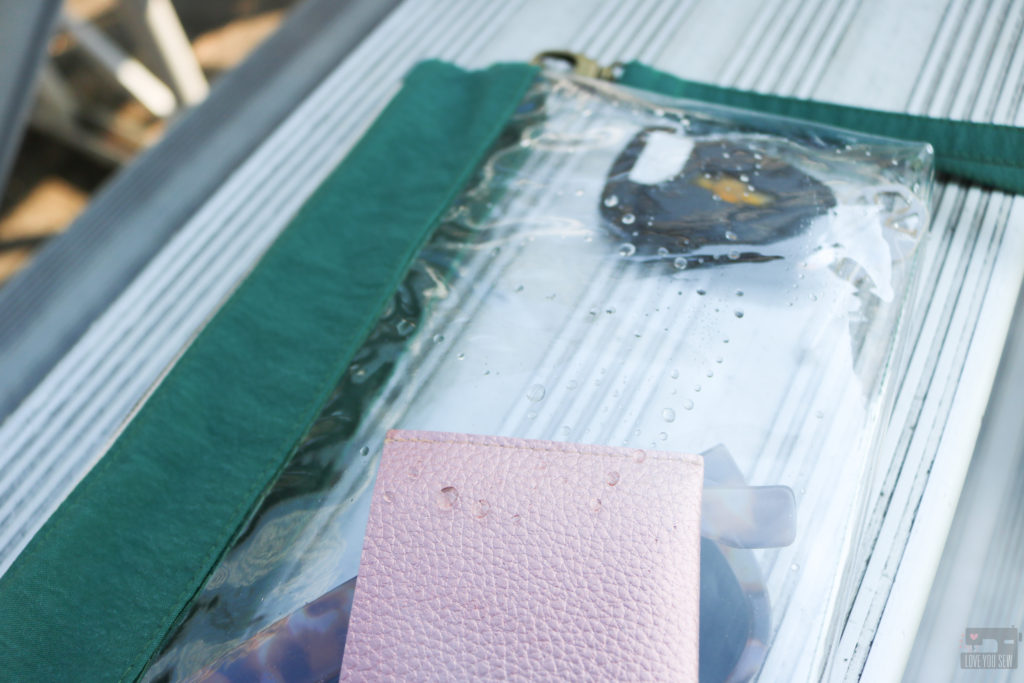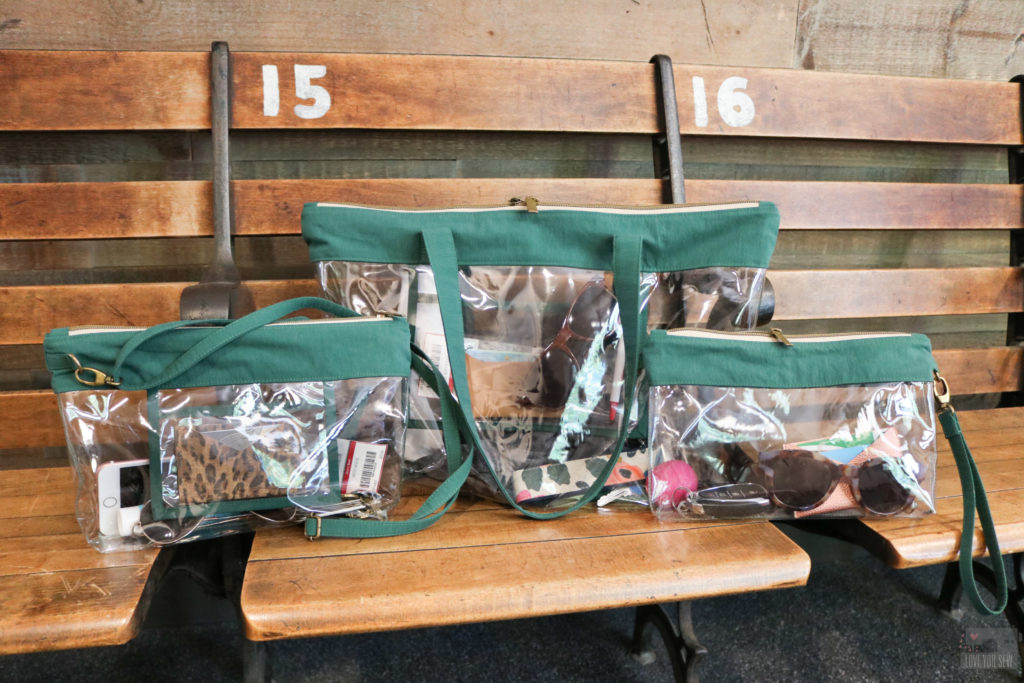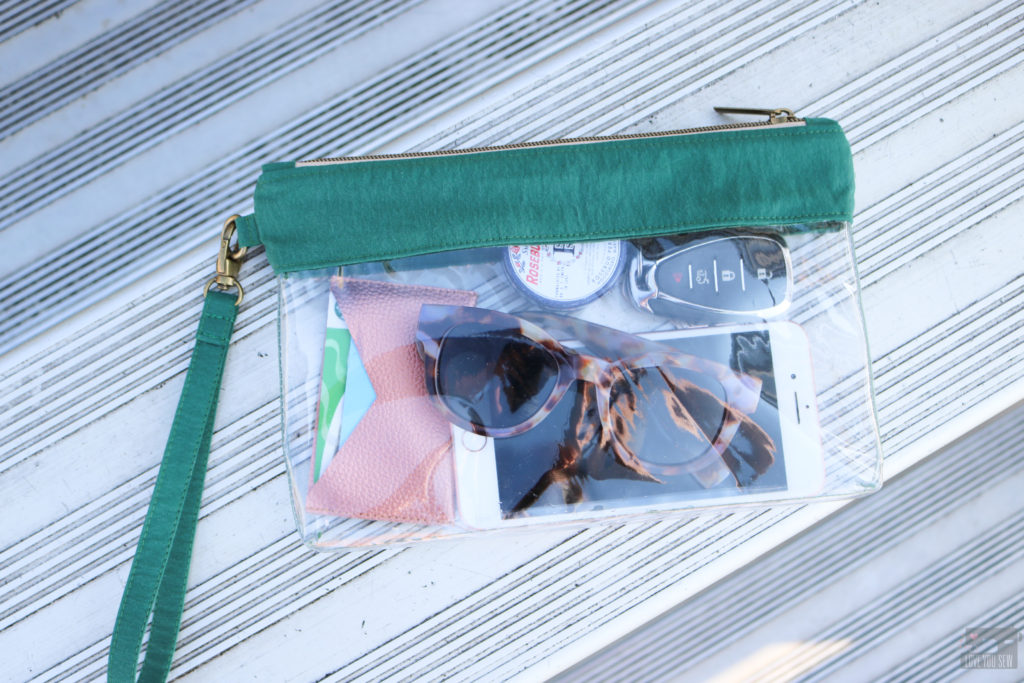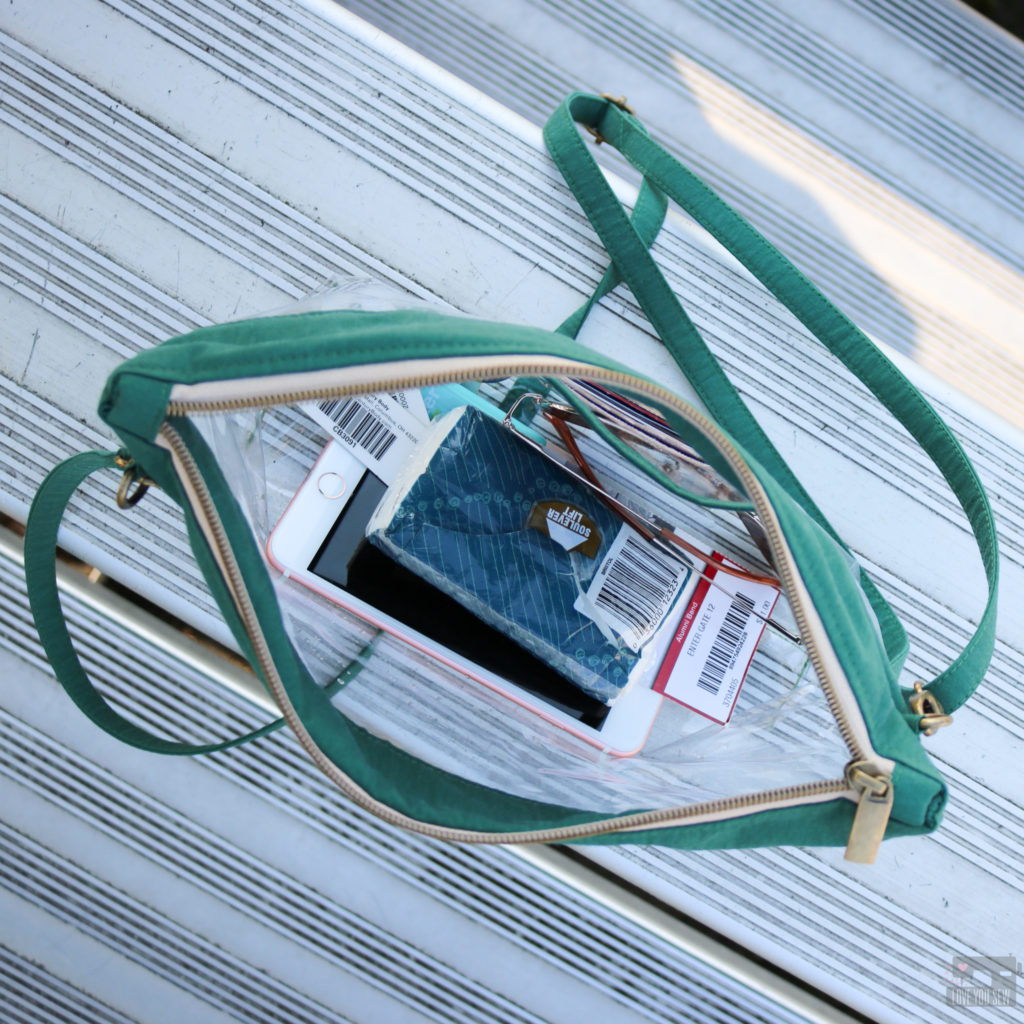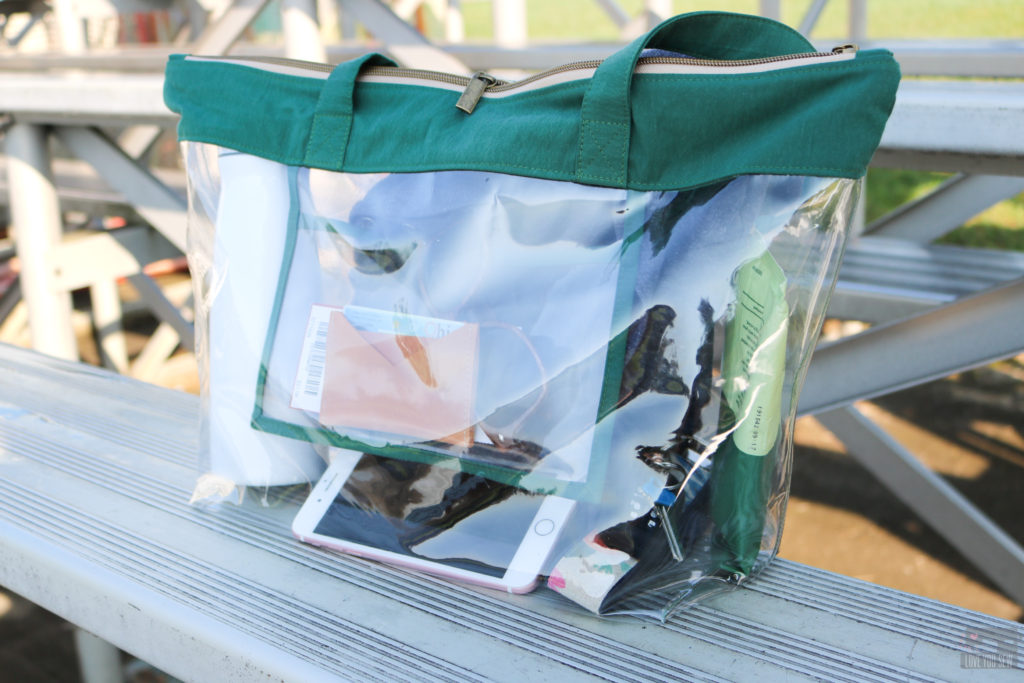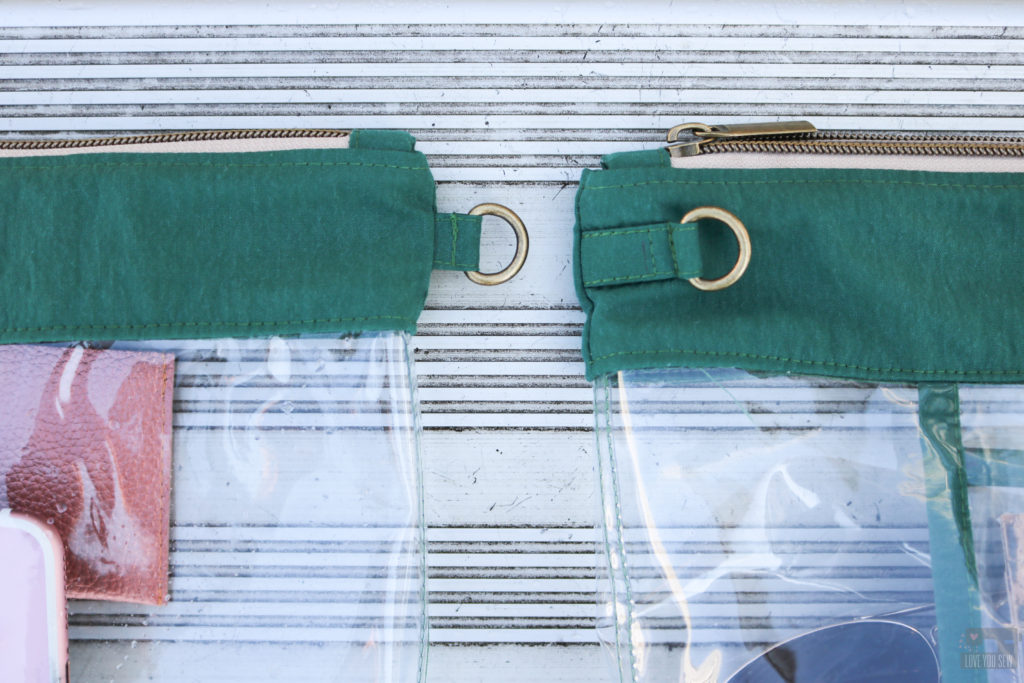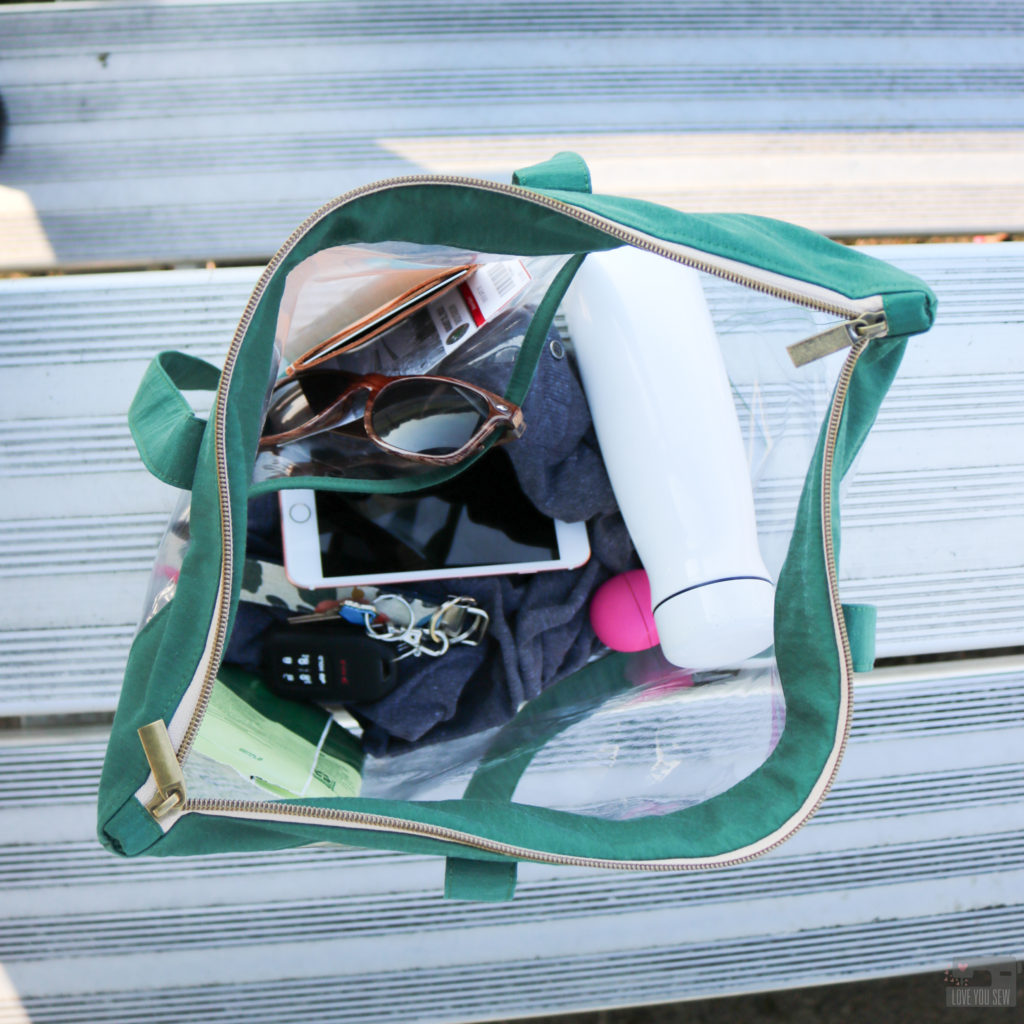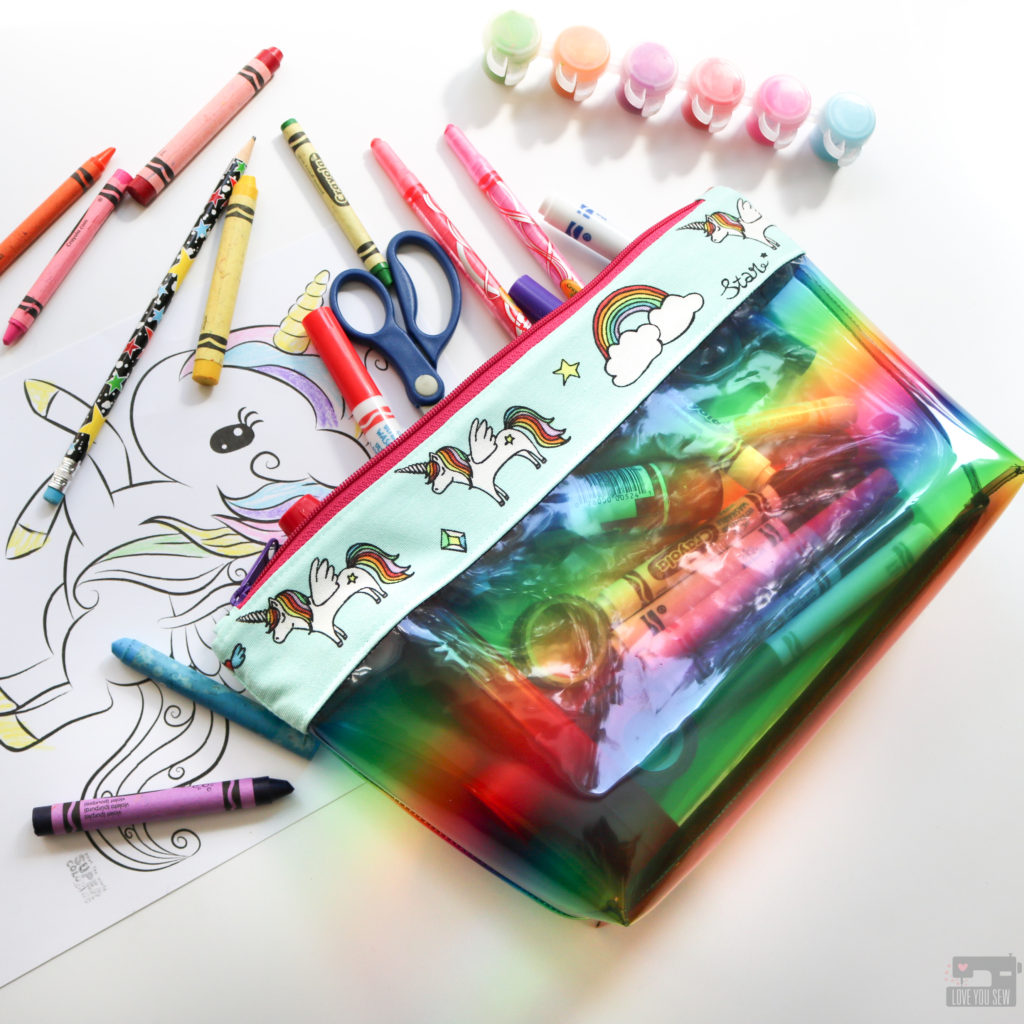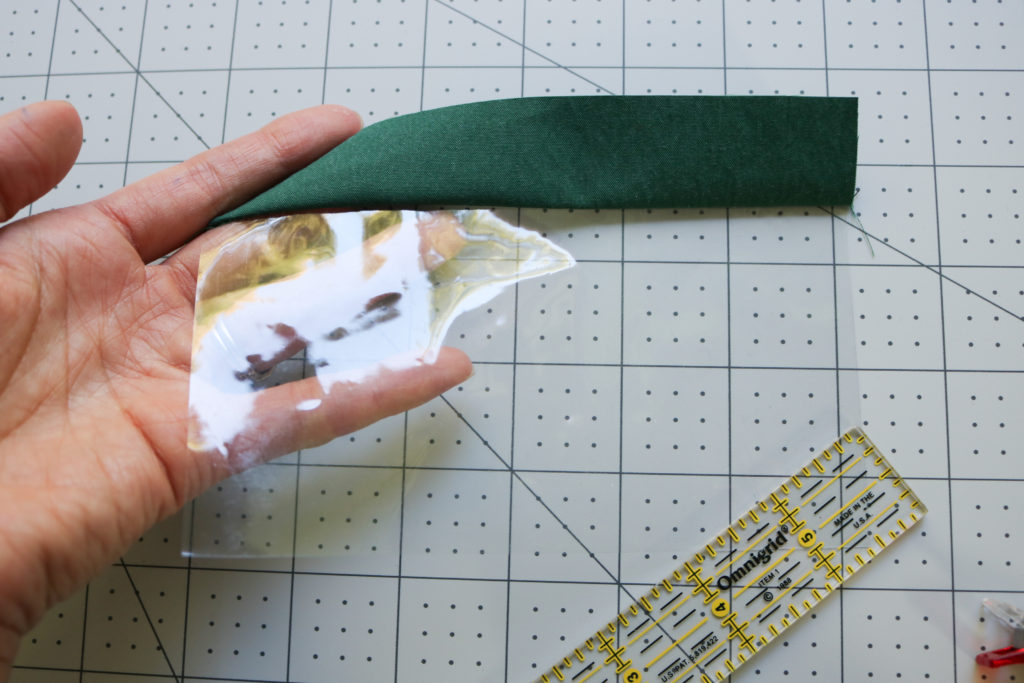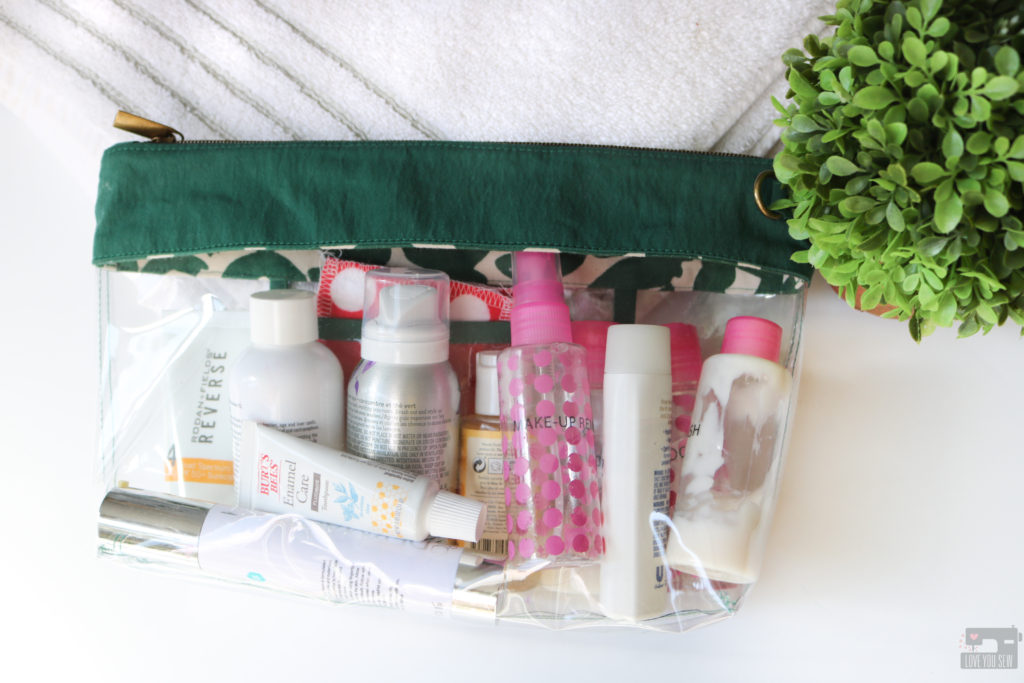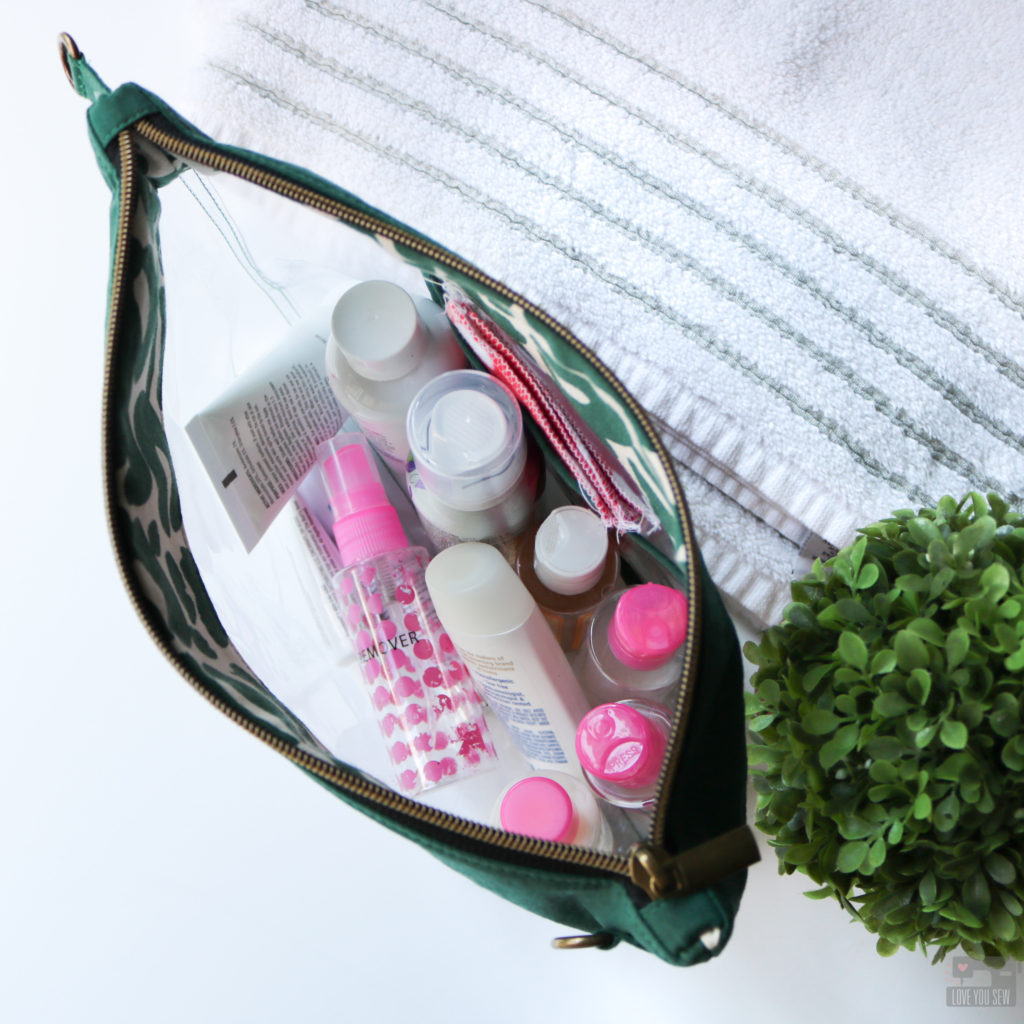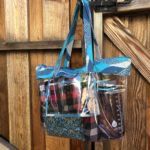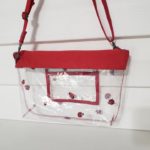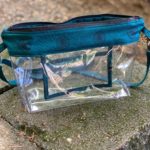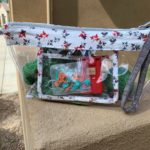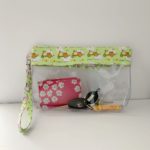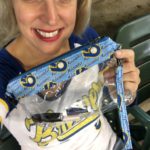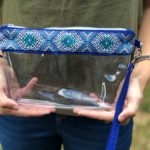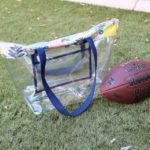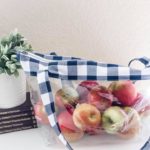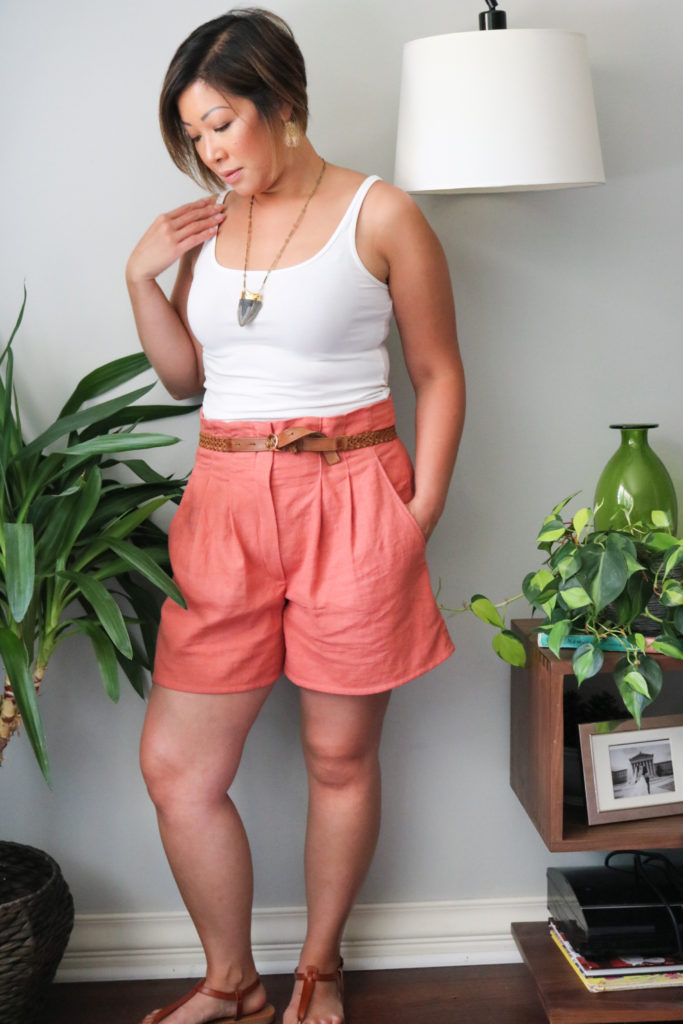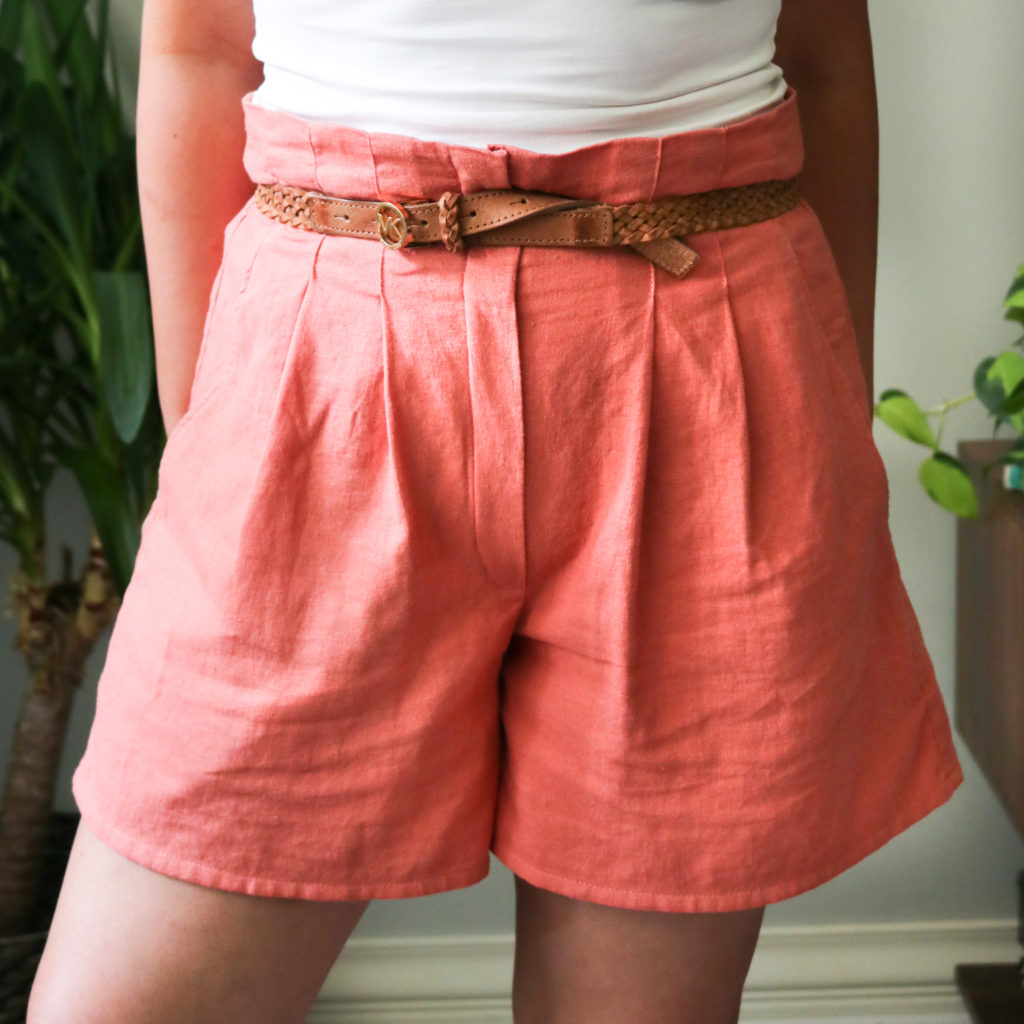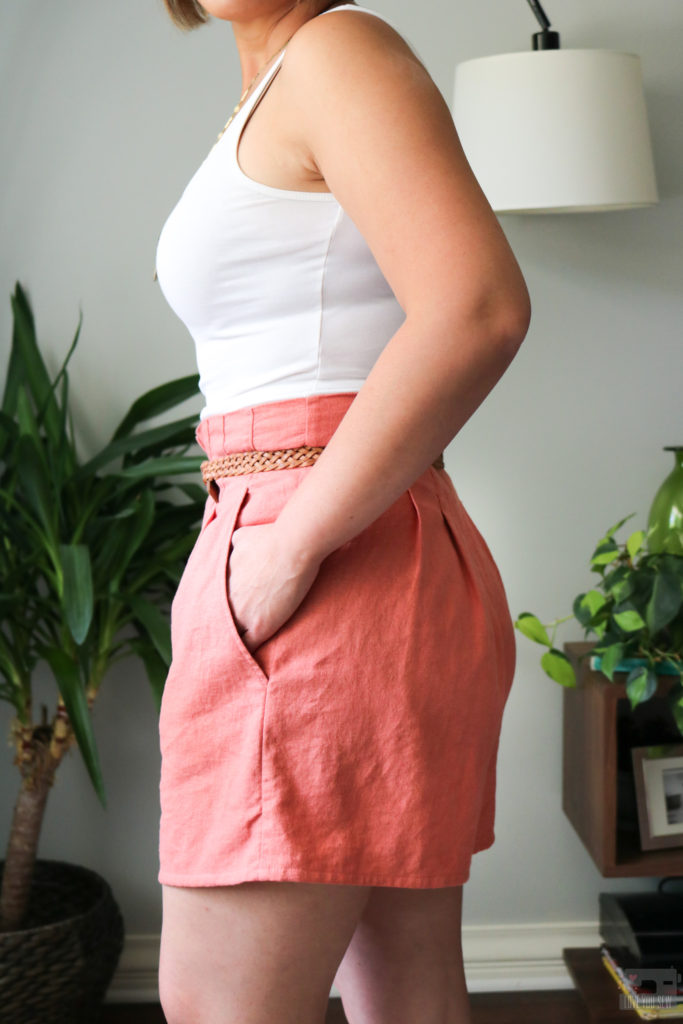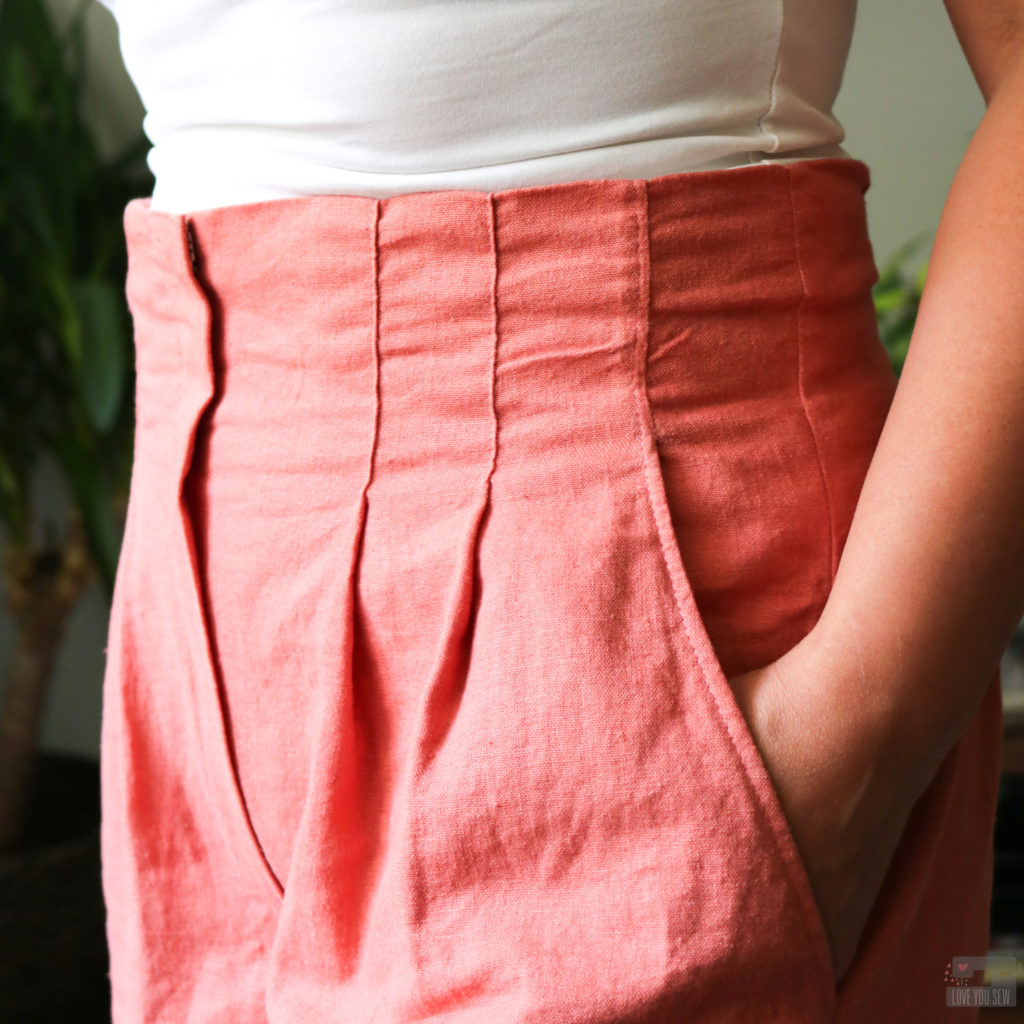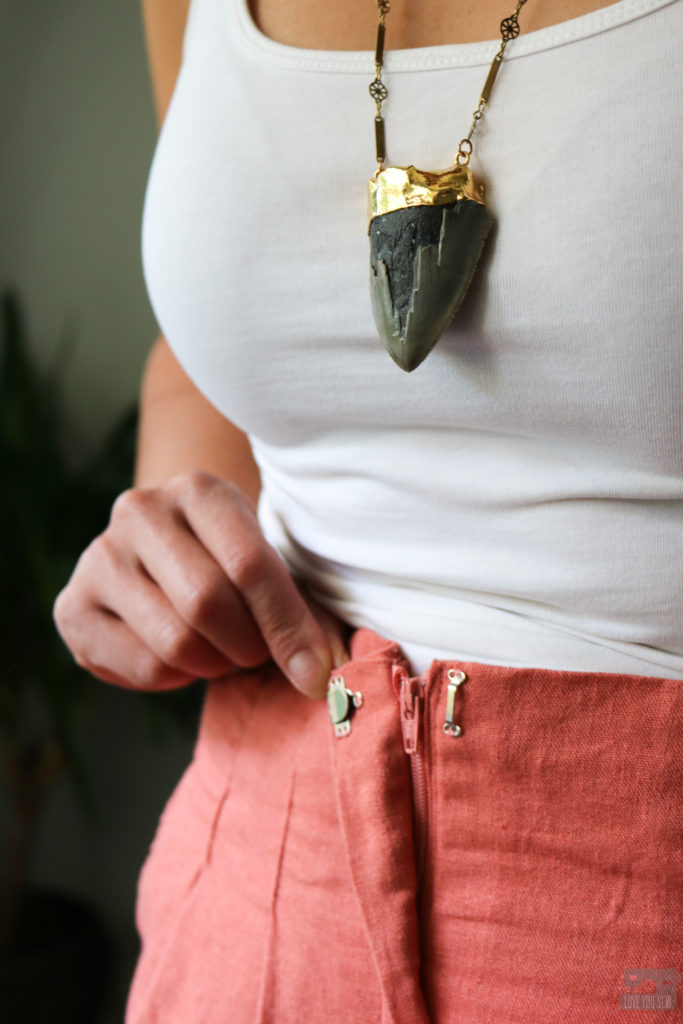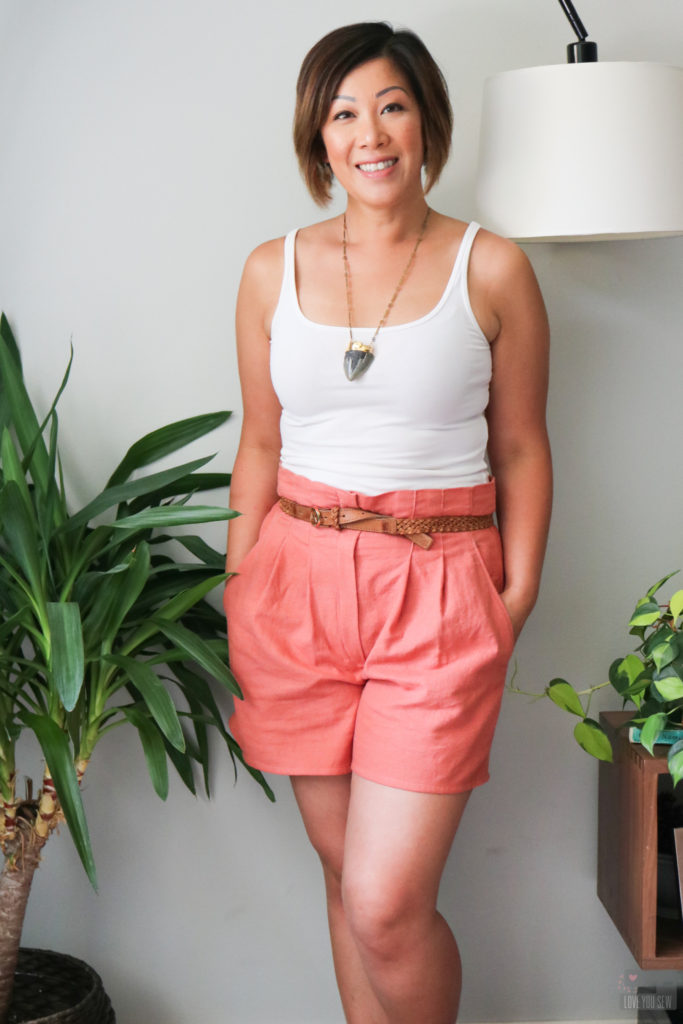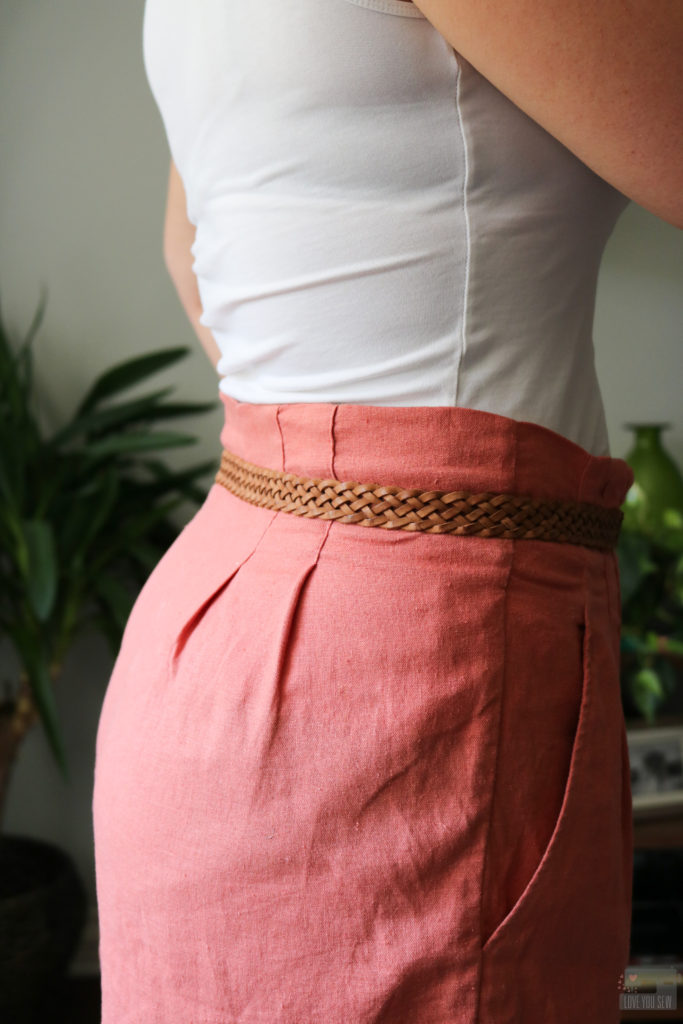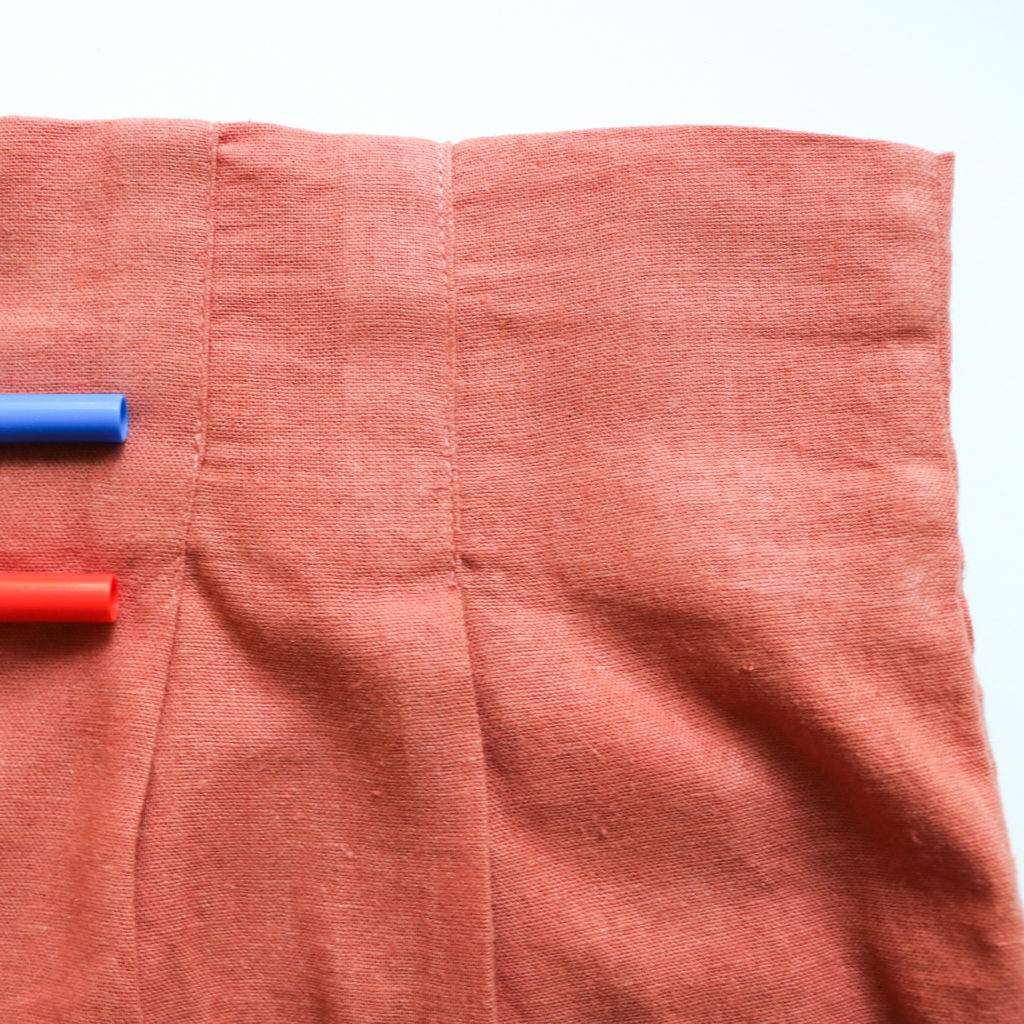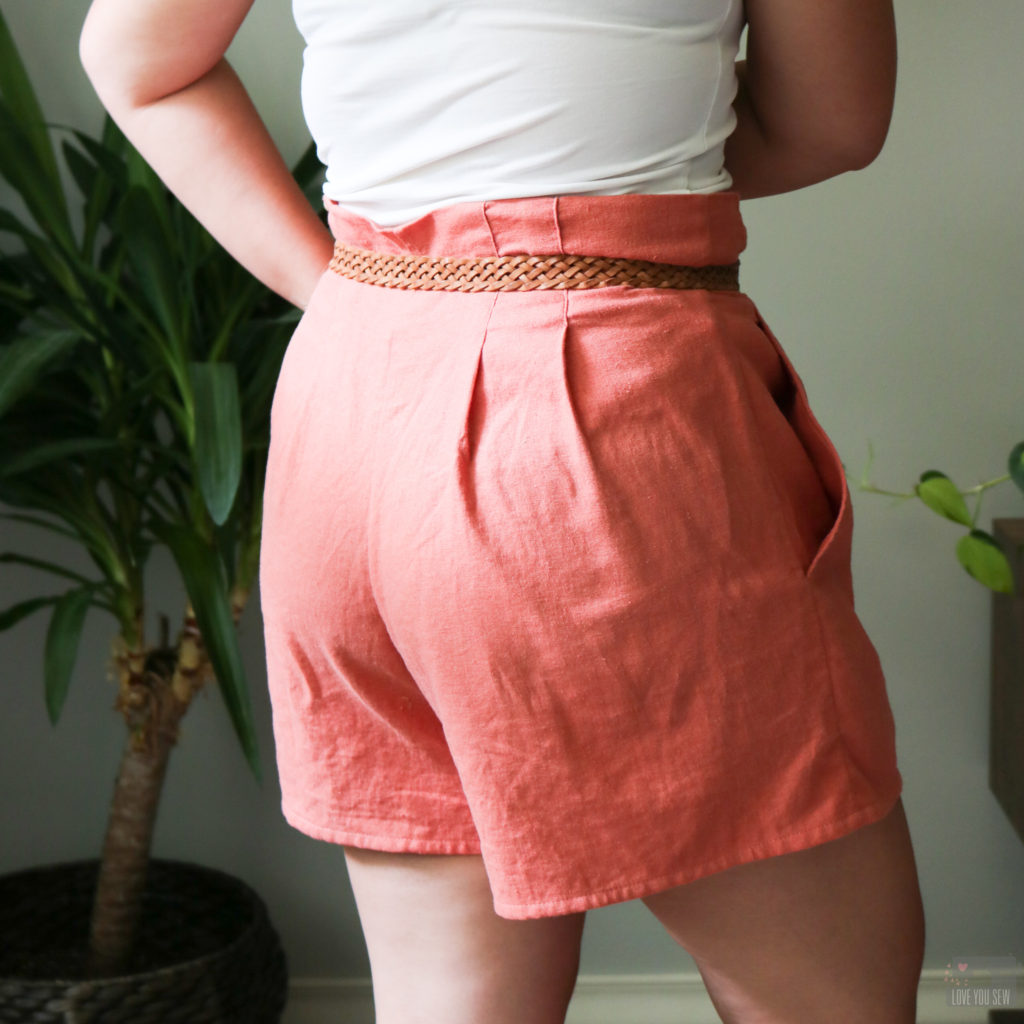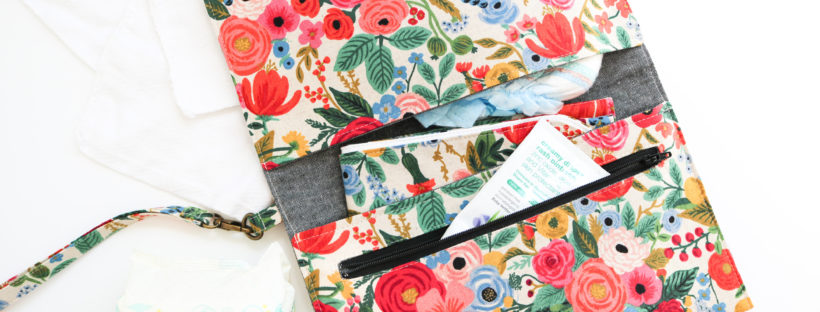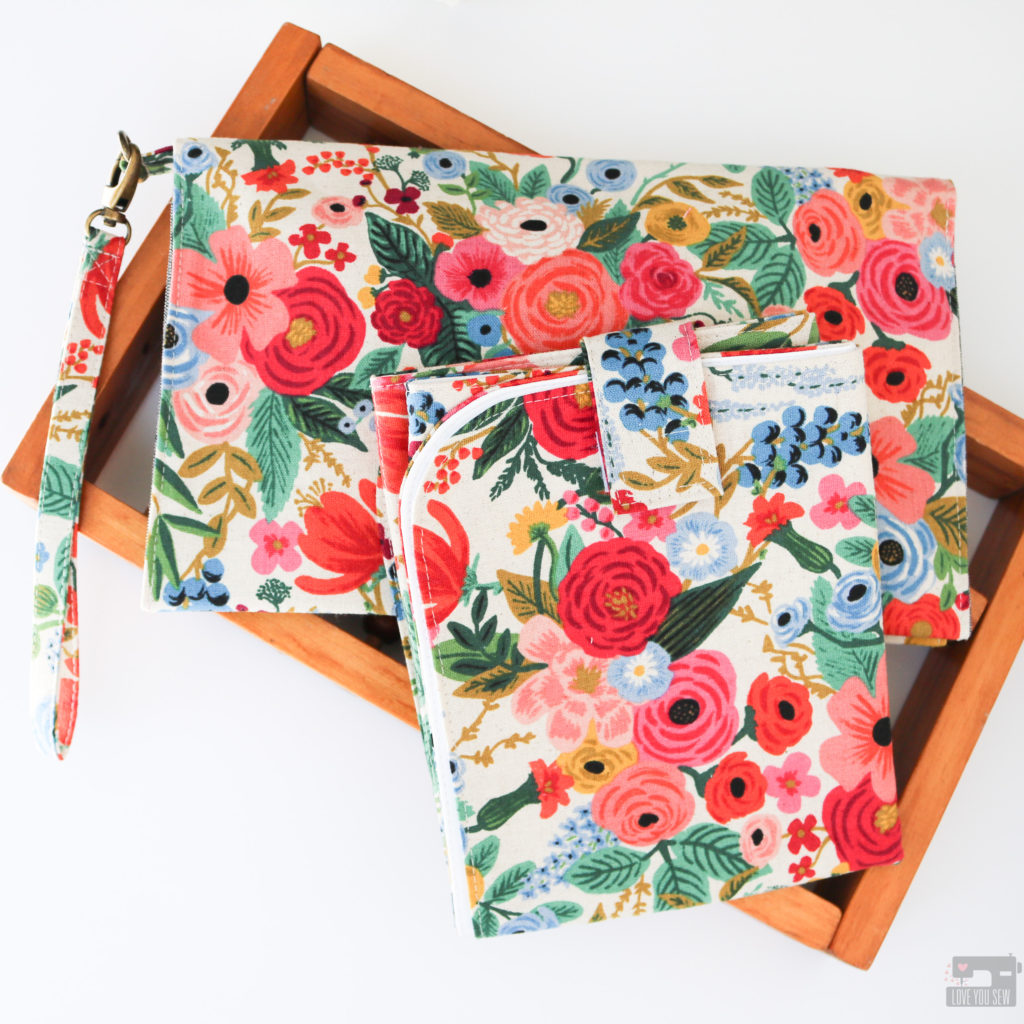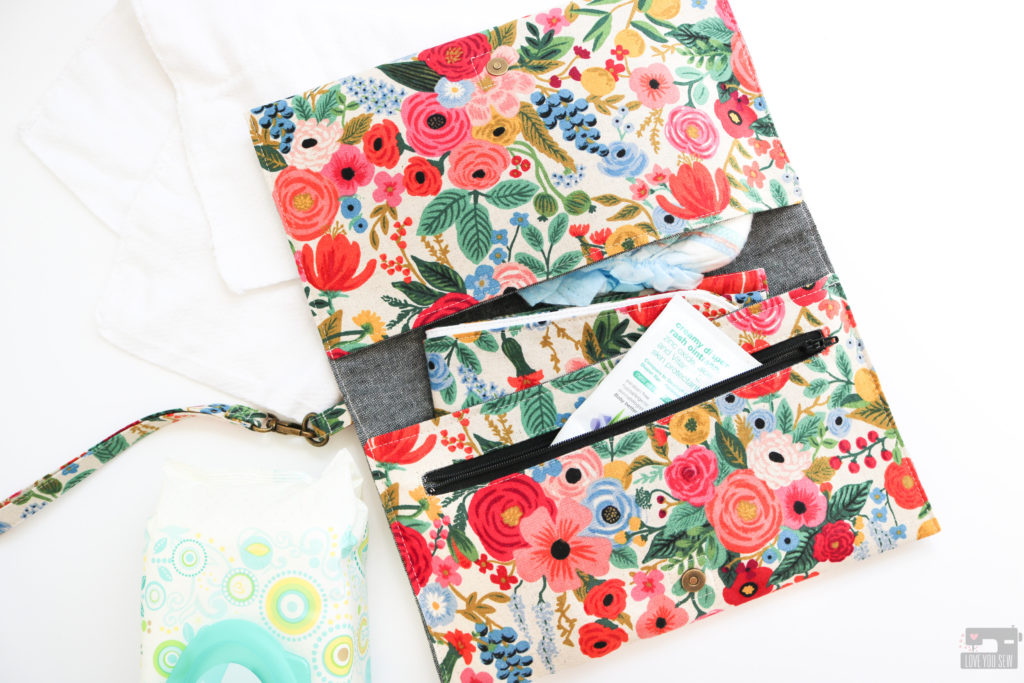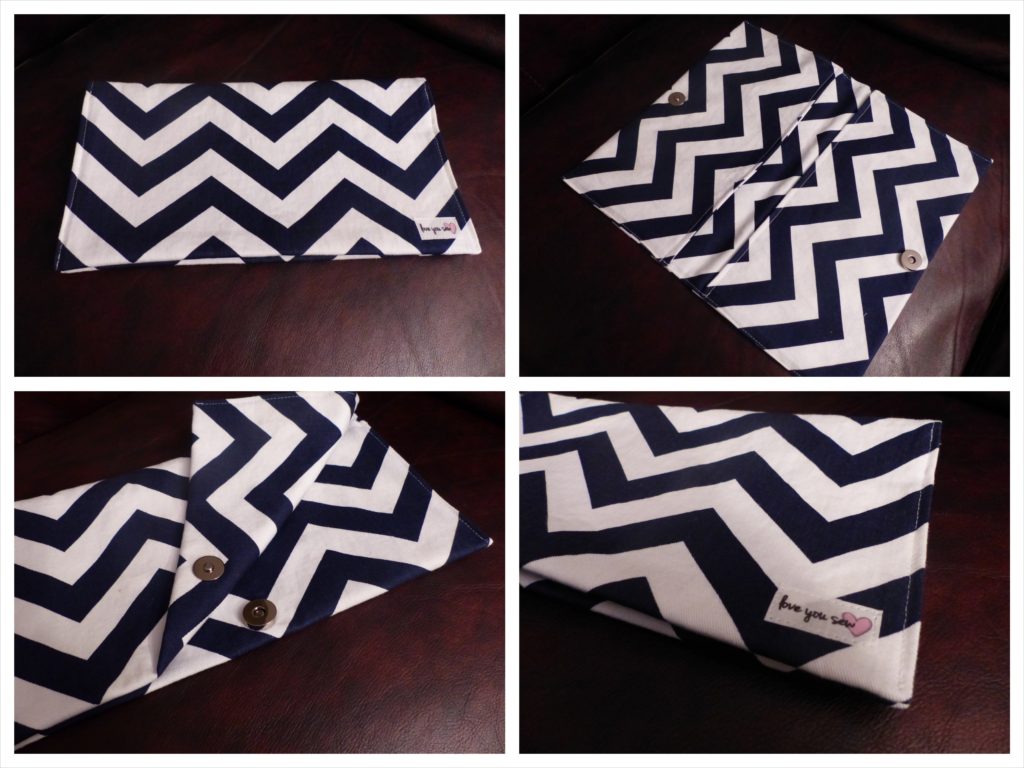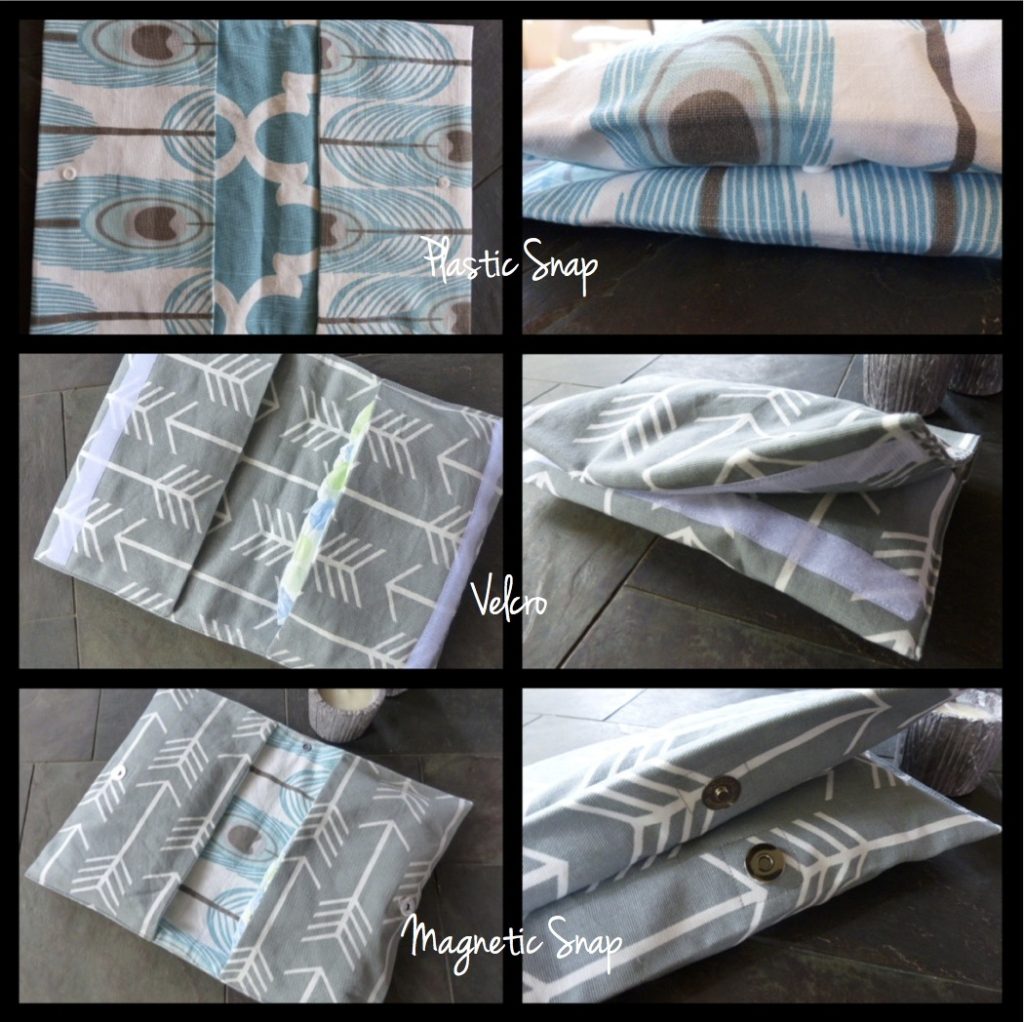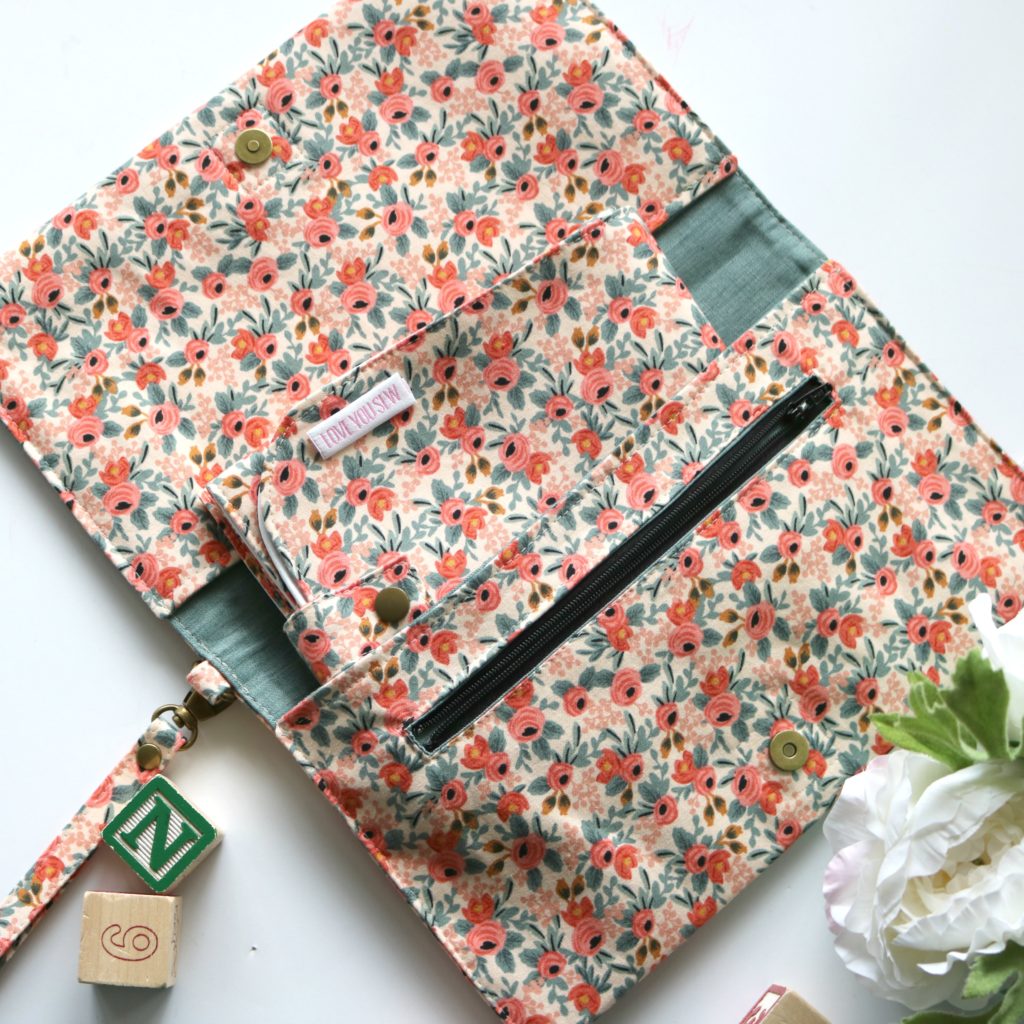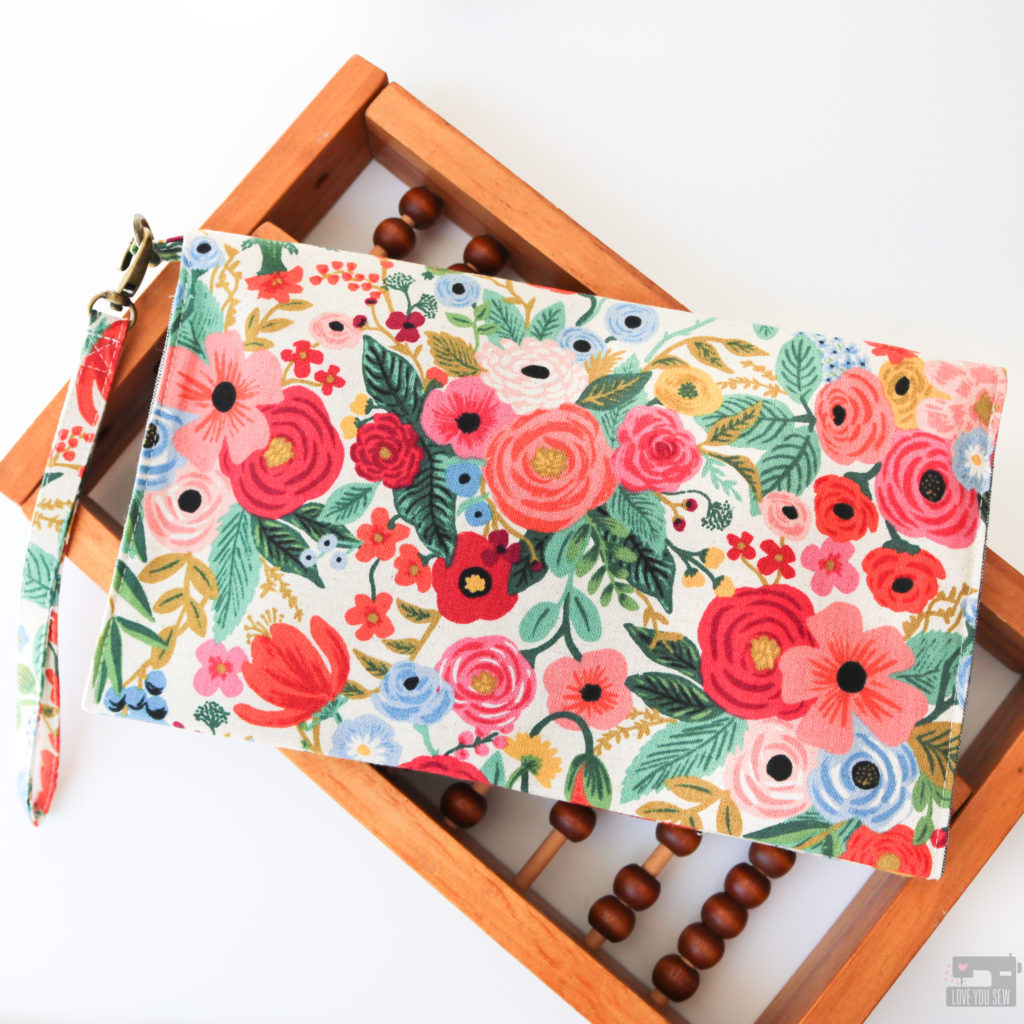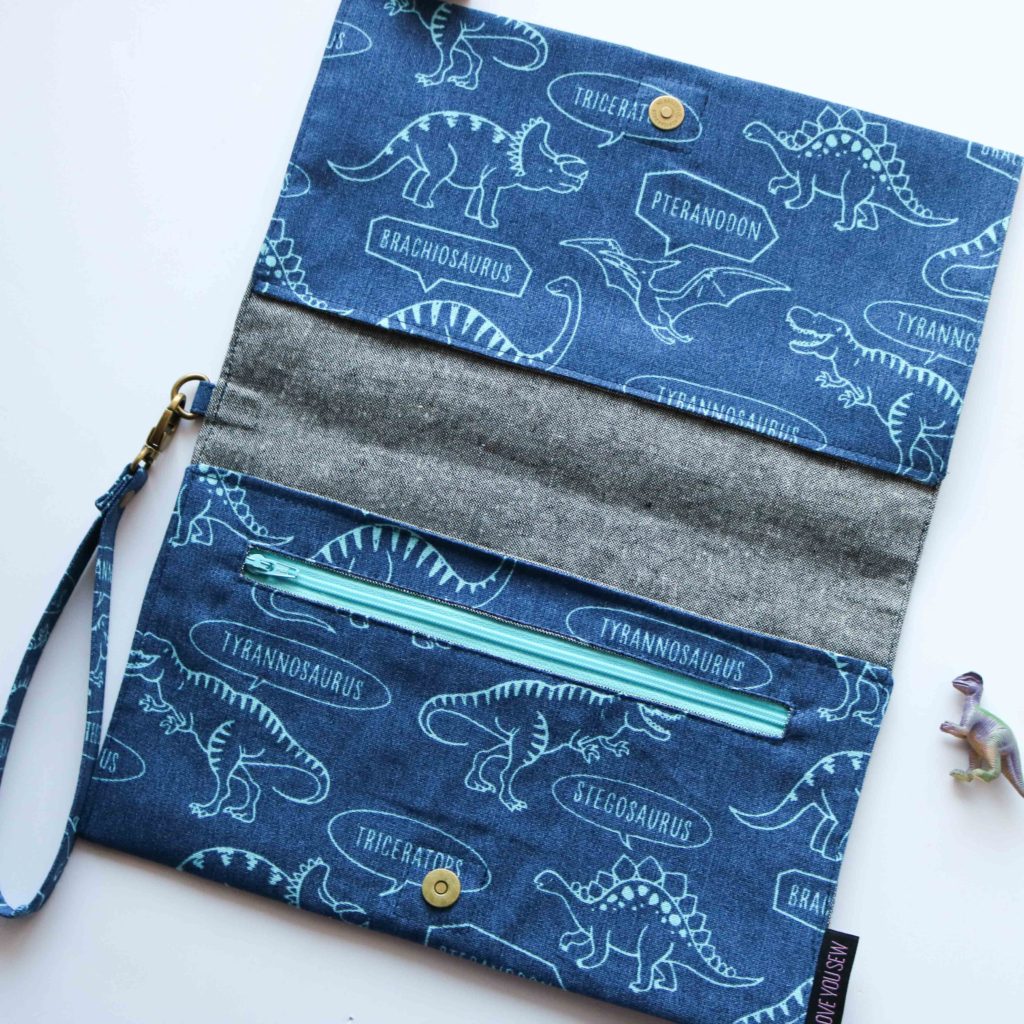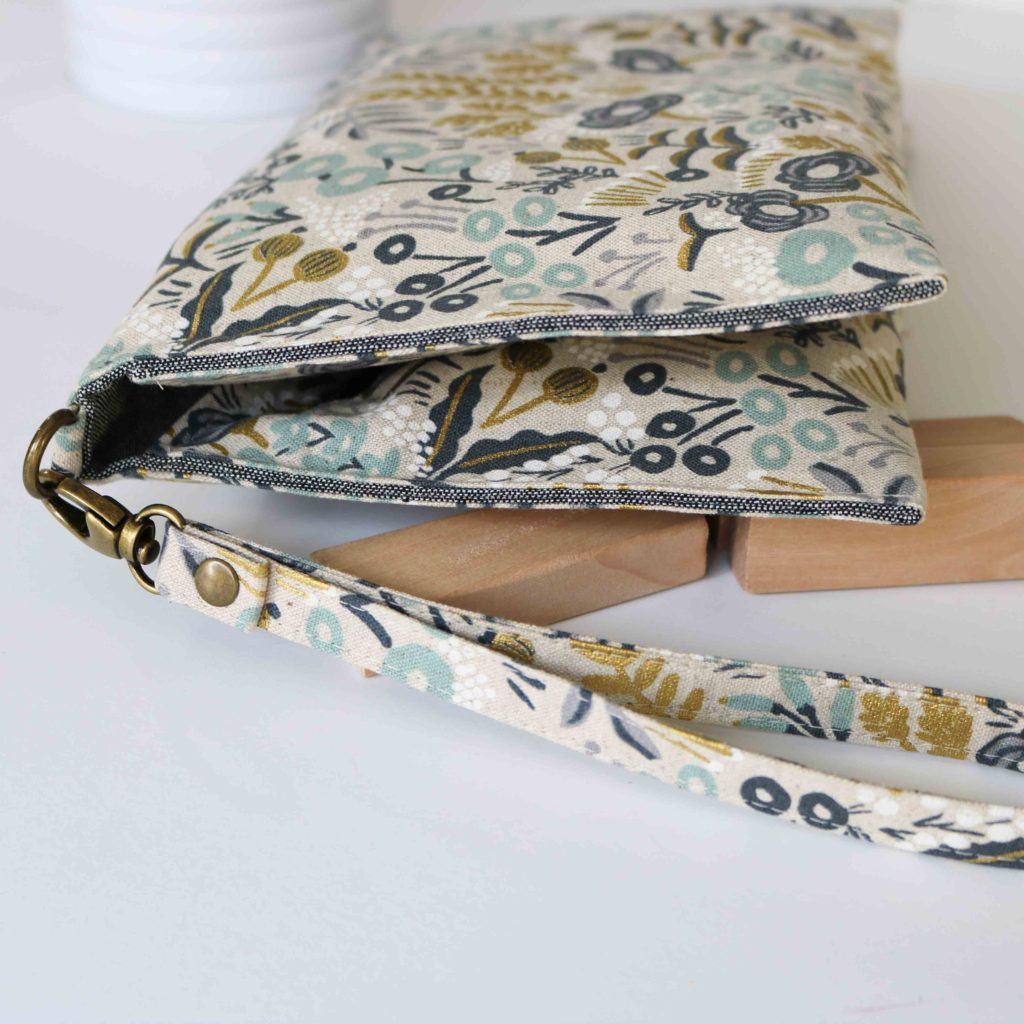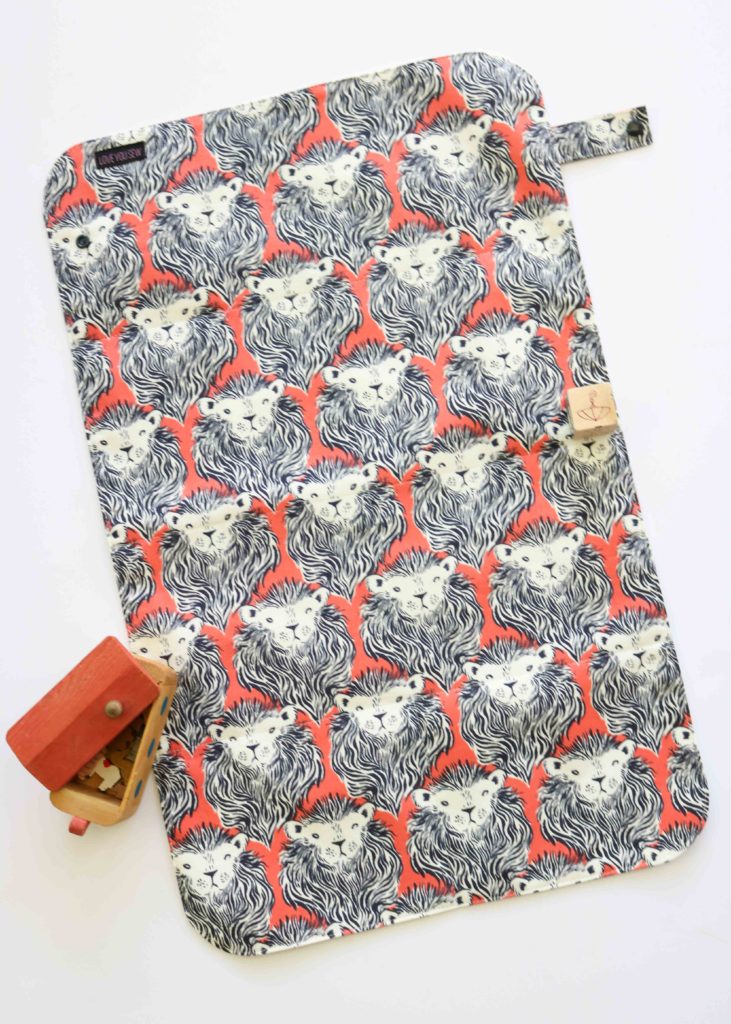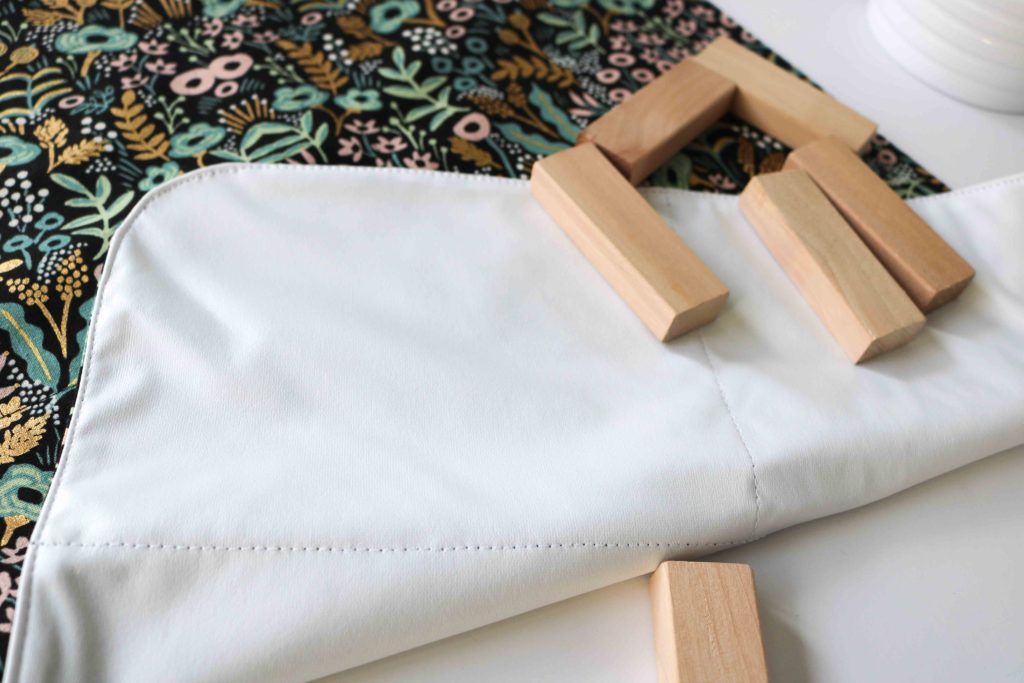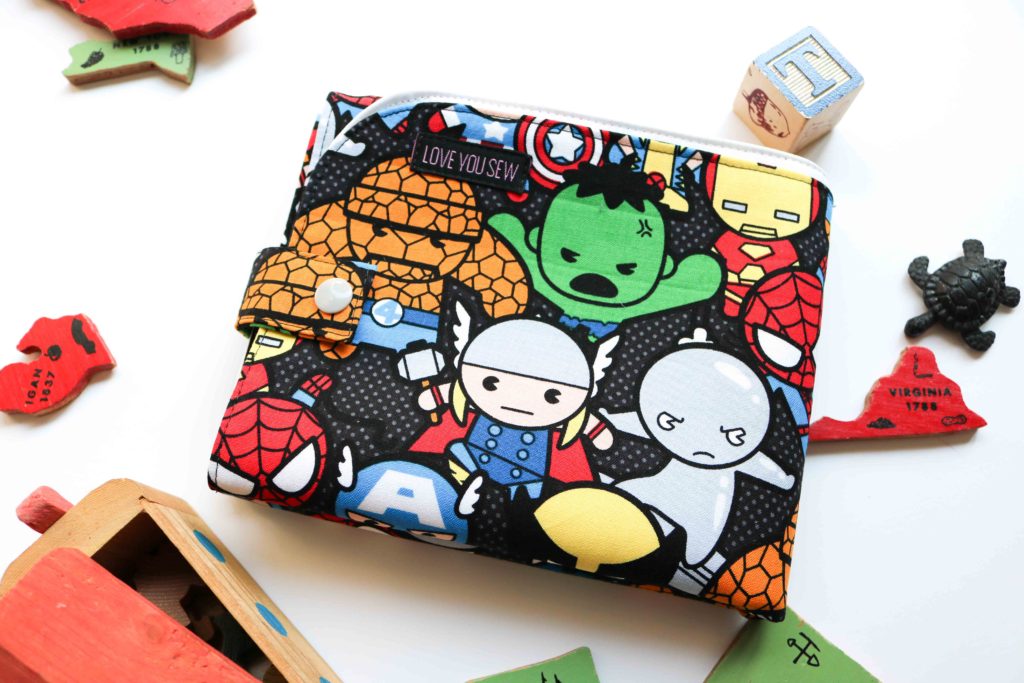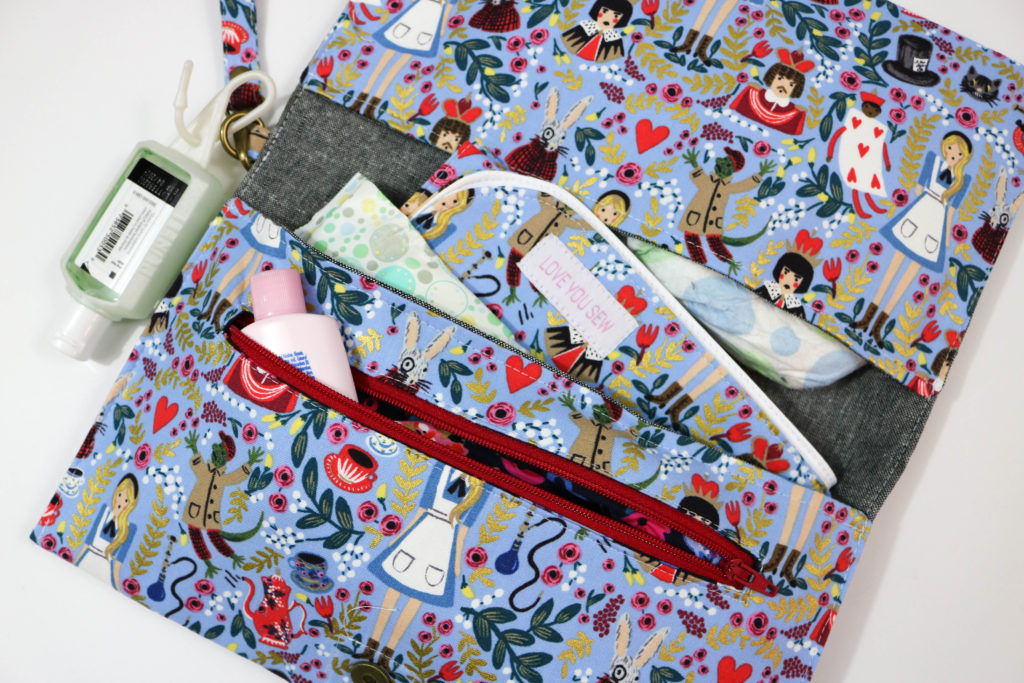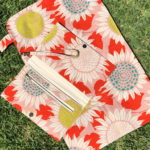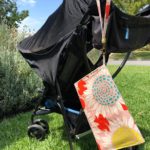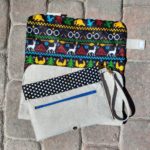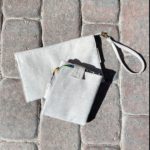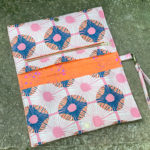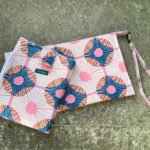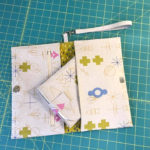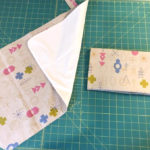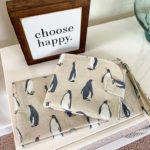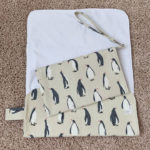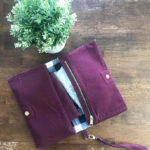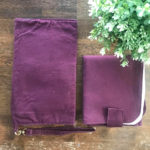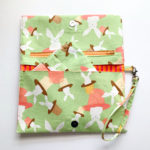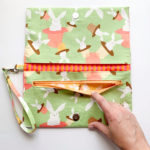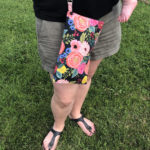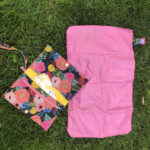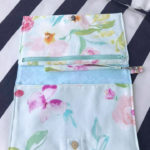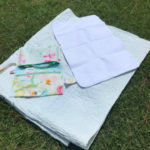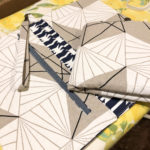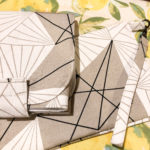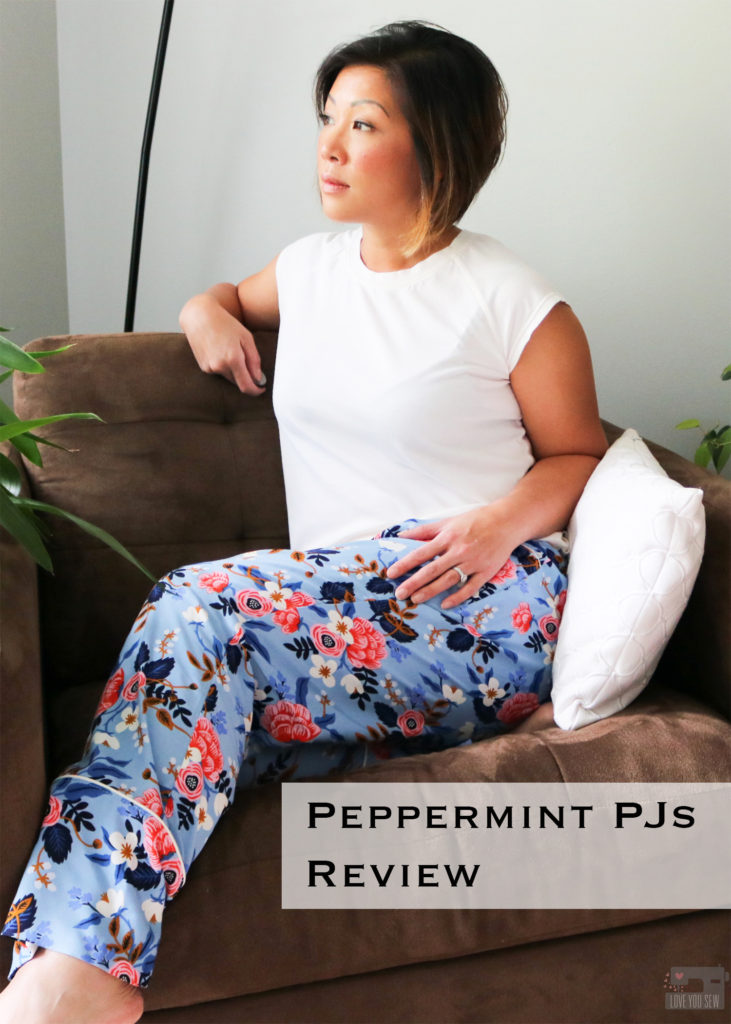
What great timing on the launch of these Peppermint Pajamas by Blank Slate Patterns. We’re heading into holiday season and I’ve always sewn family PJs for Christmas Eve. I’ve also always drafted my own (making different tweeks every year) and have yet to add pockets. Well, now I actually have a pattern (that fits!) and won’t have to spend as much time making my holiday pajamas!

Pattern
The Peppermint Pajamas comes with patterns for BOTH the woven pants and the knit top. This is like a 2-for-1 pattern with sizes ranging from XXS-3X (bust 30″ – 53″ and hips 33″ – 55″.)
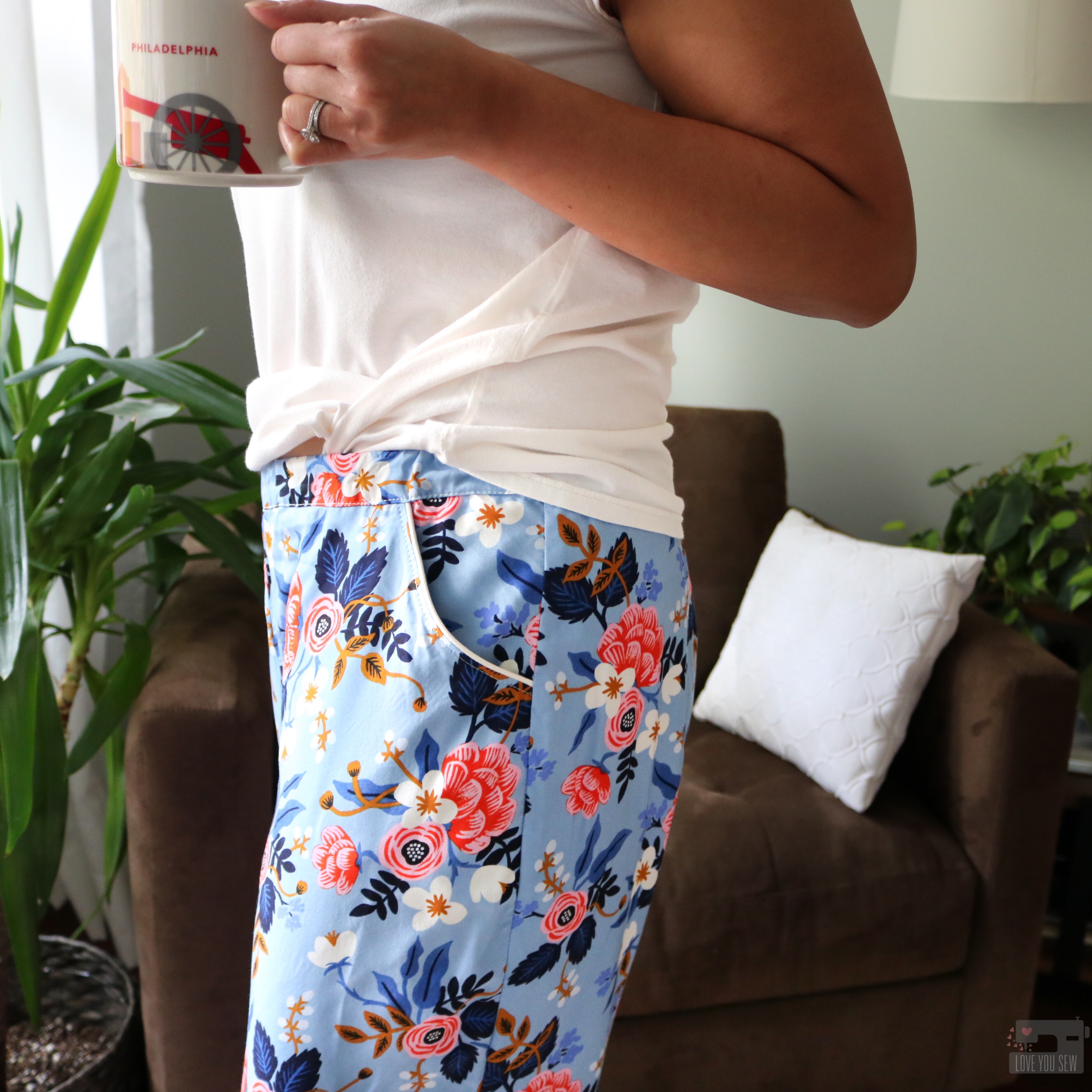
The pants feature an elastic waist, roomy slash pockets, and a separate cuff. The bottoms can be made into shorts, capris (by leaving off the cuffs) and full-length pants.
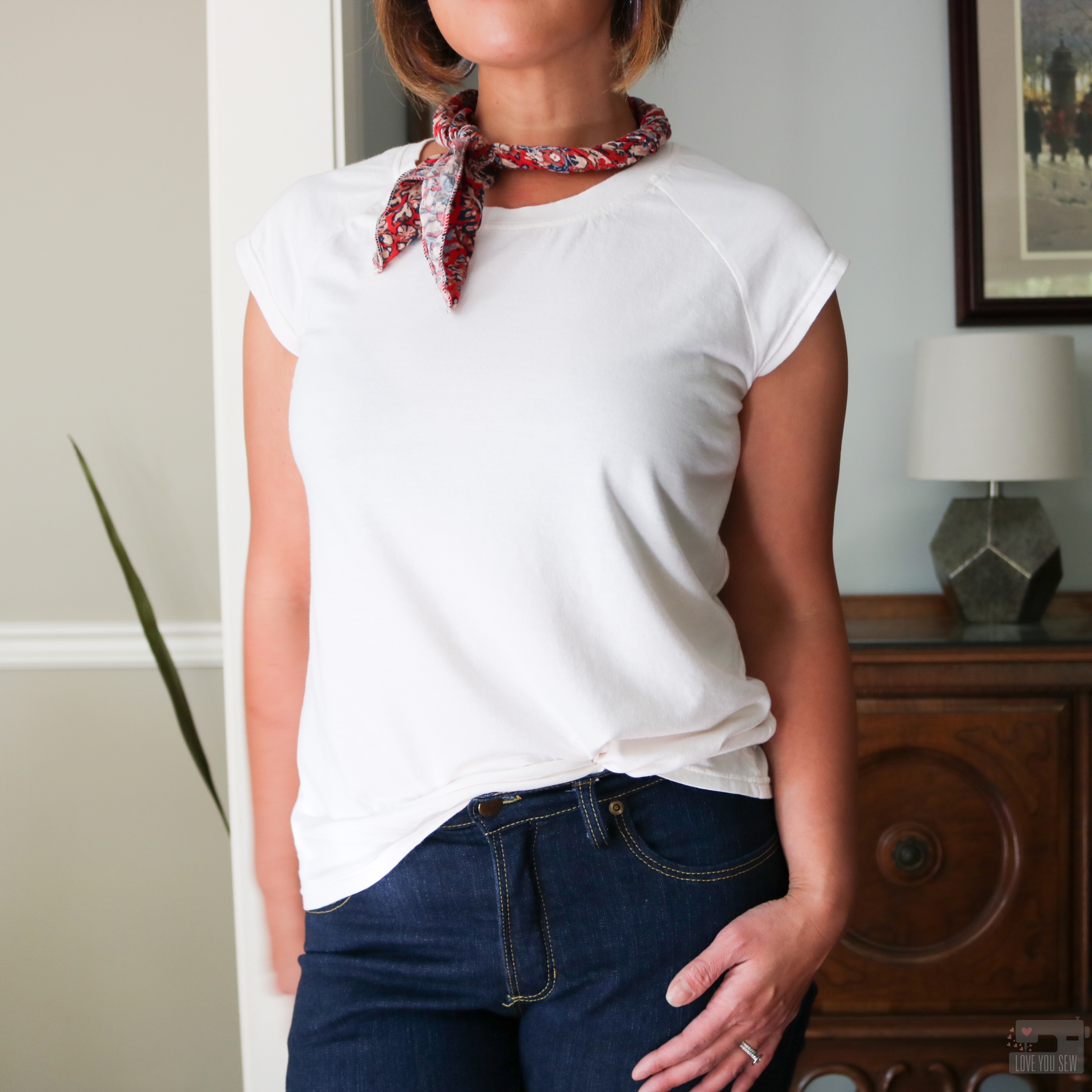
For the knit top, it features a crew-neck with raglan sleeves. You can make cap sleeves like I did, or use the long sleeve option. It has a nice relaxed slim fit for shaping, but not body-con tight.

Fabric
I knew I wanted something luxurious for my first pair of Peppermint pants. I am usually a boxers gal and wear all of my old flannel Xmas ones in colder months. I’ve been very conscious lately of my fabric consumption and was happy to find this Rifle Paper Co floral already in my stash. It is a Rayon Challis and feels incredible!. It has a soft hand, wonderful drape and feels silky to the touch. However, with these features, it can be very slippery to handle. With Rayon, I always use twice as many pins I usually do and I try not to pick a design which requires fabric matching – it is already hard enough to sew a new pattern!
For the top, I dug into my stash again and found just enough of this Robert Kaufman Dana modal knit to make the cap-sleeve version. It’s a nice off-white cream color and so soft. The knit is a bit lighter and slightly sheer, but is perfect if you are looking for a tissue tee or for some great drape. I purchased this from Imagine Gnats, but this is a staple from RK and you can find it also at Fabric.com, here.
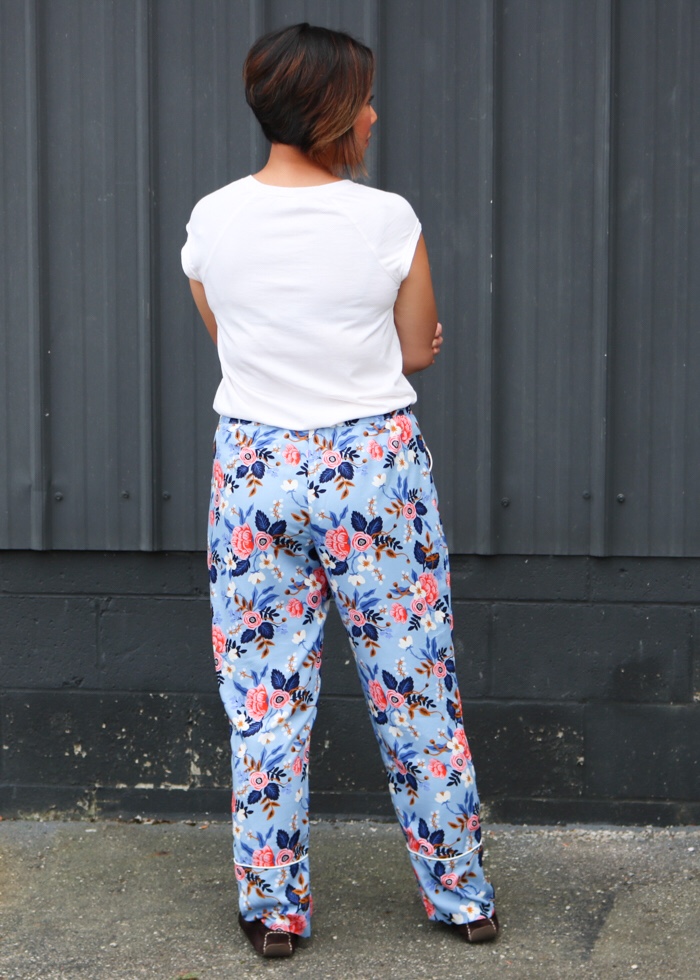
Modifications
With pants, I always measure all across the board. I’m a small in the waist and am in-between a medium and large in the hips. But since the Peppermint PJs are meant for lounging, I sized up to the large and then graded the waist to a medium since the elastic would pull the sides in more. I love the extra room – perfect for laying on the couch for family movie night! I also made my regular pants adjustments of extending the crotch by 1/2″ and deepening the seat by 3/8″.
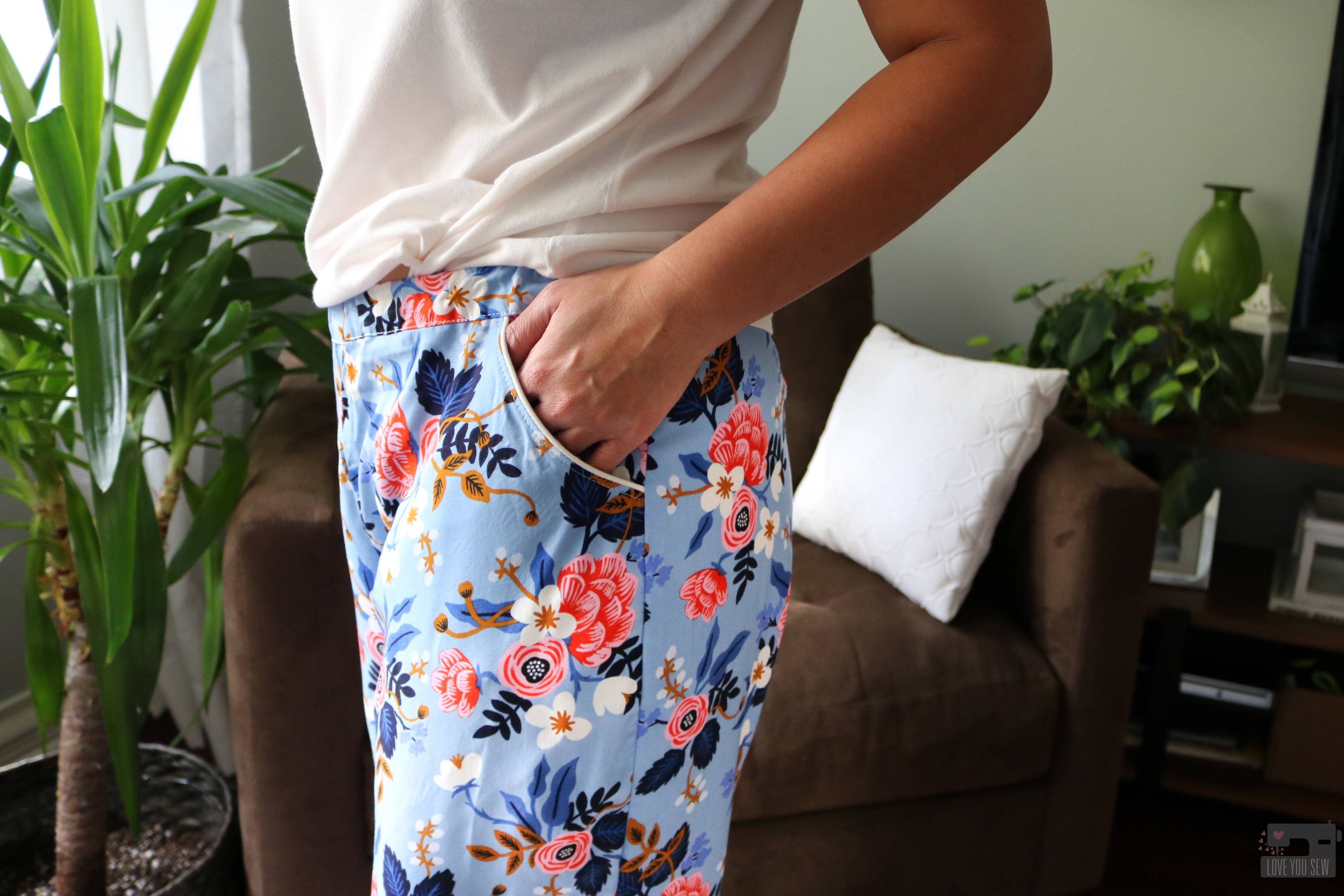
Since I was working within my stash, I did not have a contrasting rayon that would work with my floral print. So I added piping where the cuffs attached to help keep the look cohesive. I also added piping at the pockets to balance out the look.

As you know, I’m also a shortie at 5’3″. I used the shorten/lengthen line to reduce the front and back legs by 2″. On the cuff, I took another 2″ off the total length because I didn’t want this delicate fabric to drag on the floor at all. So overall, I took 4″ off each leg.
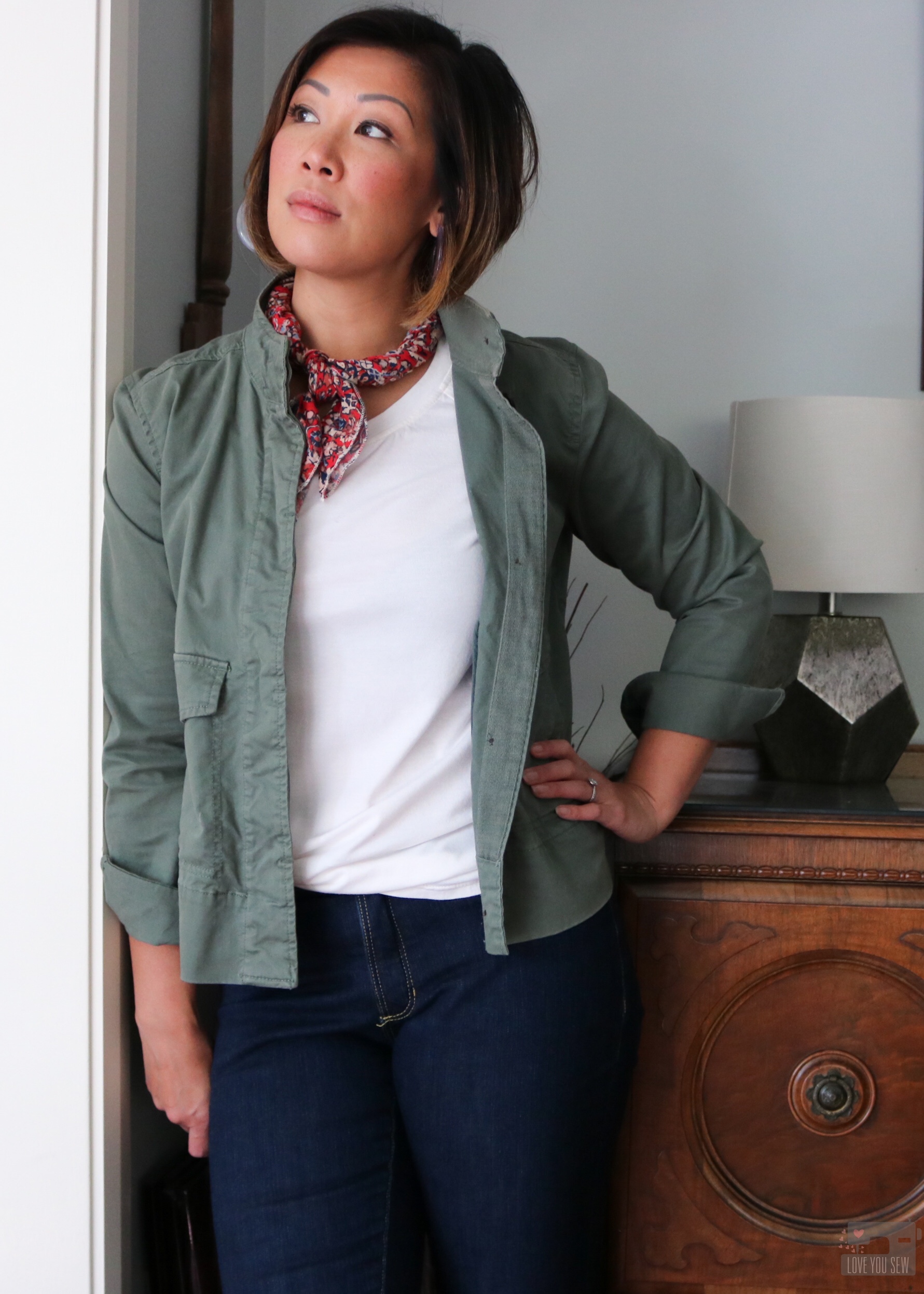
With the top, I made a straight medium with the cap sleeve and didn’t make any additional adjustments. The length is great for a PJ tee and I think this is great pattern for any basic tee. It’s a great neutral to wear with jeans and a light jacket for fall!

Final thoughts
The Peppermint PJs were great basics to sew and I love the video on Melly Sews YouTube channel on making the waistband. It’s always great to get that double-check while sewing to ensure the correct construction! I think this is beginner-friendly and a great value with two patterns for the price of one! I hope you enjoy making this set as much as I did!!!
Hugs and Stitches,
Cristy
The pattern was gifted to me by Blank Slate Patterns, but I was not required to write a blog post. All thoughts and opinions are my own. Also, this post may contain affiliate links. You can read about all of my disclosures, here.
